Feb. 29, 2024
Prelims Pointers
Feb. 29, 2024
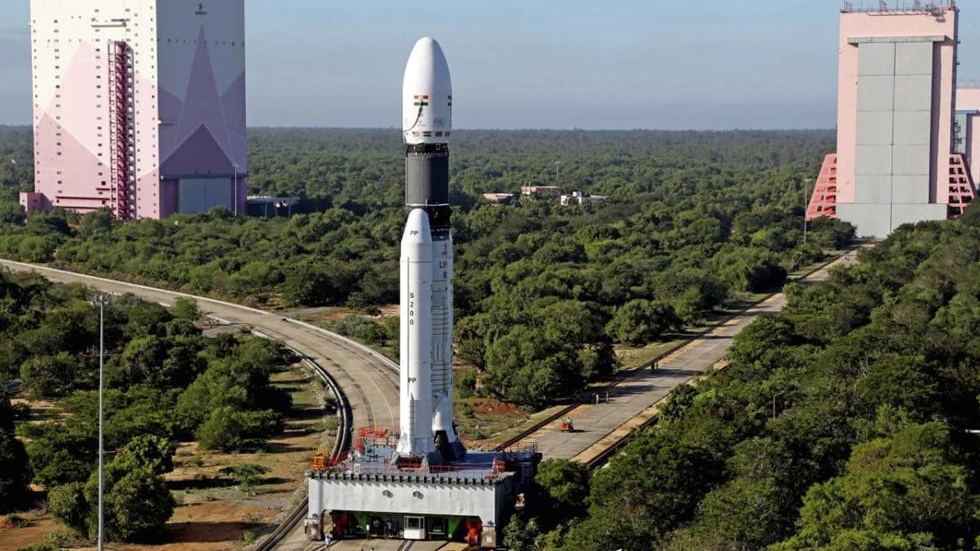
About Kulasekarapattinam Spaceport:
- It is a new spaceport coming up at Kulasekarapattinam, a coastal hamlet near the temple town of Tiruchendur in Thoothukudi district in southern Tamil Nadu.
- It will be second after the space agency’s existing Satish Dhawan Space Centre, founded in Andhra Pradesh’s Sriharikota in 1971, with two launch pads.
- It will focus on the launch of Small Satellite Launch Vehicles (SSLVs) on a commercial basis.
- It will house 35 facilities, including a launch pad, rocket integration facilities, ground range and checkout facilities, and a mobile launch structure (MLS) with checkout computers.
- It would have the capacity to launch 24 satellites per year using a mobile launch structure.
- Spread over 2,350 acres, the Kulasekharapatnam spaceport will help save fuel for small rocket launches as the port can launch rockets directly south over the Indian Ocean without requiring crossing landmasses.
- This is unlike the existing launch site at the Satish Dhawan Space Centre, which adds more fuel requirements for launching into a polar orbit as rockets need to follow a curved path to the south to avoid Sri Lanka’s landmass.
- It is estimated to cost Rs. 986 crore.
Key Facts about Small Satellite Launch Vehicles (SSLVs):
- SSLV is a 3-stage Launch Vehicle configured with three Solid Propulsion Stages and a liquid propulsion-based Velocity Trimming Module (VTM) as a terminal stage.
- SSLV is 2m in diameter and 34m in length with a lift-off weight of 120 tonnes.
- SSLV is capable of launching a 500kg satellite in a 500 km planar orbit.
- The key features of SSLV are Low cost, with low turn-around time, flexibility in accommodating multiple satellites, Launch-on-demand feasibility, minimal launch infrastructure requirements, etc.
Prelims Pointers
Feb. 29, 2024
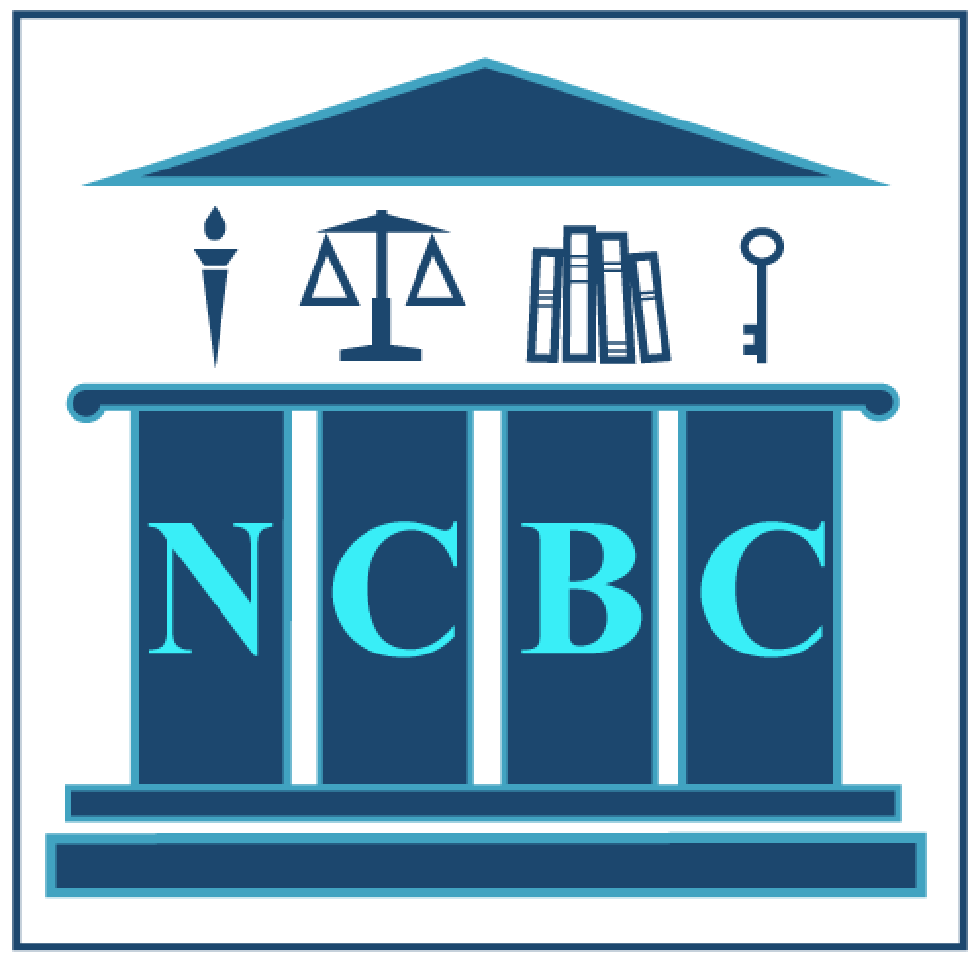
About National Commission for Backward Classes (NCBC):
- NCBC was initially constituted by the Central Government by the National Commission for Backward Classes Act, 1993, under the Ministry of Social Justice and Empowerment.
- It has been accorded constitutional status through “The Constitution (One Hundred and Second Amendment) Act, 2018”, whereby Article 338B has been inserted, forming a Commission for the socially and educationally backward classes to be known as the NCBC.
- The amendment inserted Article 338B, Article 342A, and Clause 26C in Article 366.
- Composition: The Commission consists of a Chairperson, a Vice-Chairperson, and three other Members in the rank and pay of Secretary to the Government of India.
- The Chairperson, Vice-Chairperson and other Members of the Commission shall be appointed by the President by warrant under his hand and seal.
- Functions: It shall be the duty of the Commission
- to investigate and monitor all matters relating to the safeguards provided for the socially and educationally backward classes under this Constitution or under any other law for the time being in force or under any order of the Government, and to evaluate the working of such safeguards;
- to inquire into specific complaints with respect to the deprivation of rights and safeguards of the socially and educationally backward classes;
- to participate and advise on the socio-economic development of the socially and educationally backward classes and to evaluate the progress of their development under the Union and any State;
- to present to the President, annually and at such other times as the Commission may deem fit, reports upon the working of those safeguards;
- to make in such reports recommendations as to the measures that should be taken by the Union or any State for the effective implementation of those safeguards and other measures for the protection, welfare, and socio-economic development of the socially and educationally backward classes;
- to discharge such other functions in relation to the protection, welfare, and development and advancement of the socially and educationally backward classes as the President may, subject to the provisions of any law made by Parliament, by rule specify
- The President shall cause all such reports to be laid before each House of Parliament along with a memorandum explaining the action taken or proposed to be taken on the recommendations relating to the Union and the reasons for the non-acceptance, if any, of any of such recommendations.
- Powers:
- While inquiring into any complaint, it will have all the powers of a civil court(it will be able to summon any person, ask for a document, and receive evidence on affidavits).
- The Union and every State Government shall consult the Commission on all major policy matters affecting the socially and educationally backward classes.
- The Commission shall have the power to regulate its own procedures.
Prelims Pointers
Feb. 29, 2024
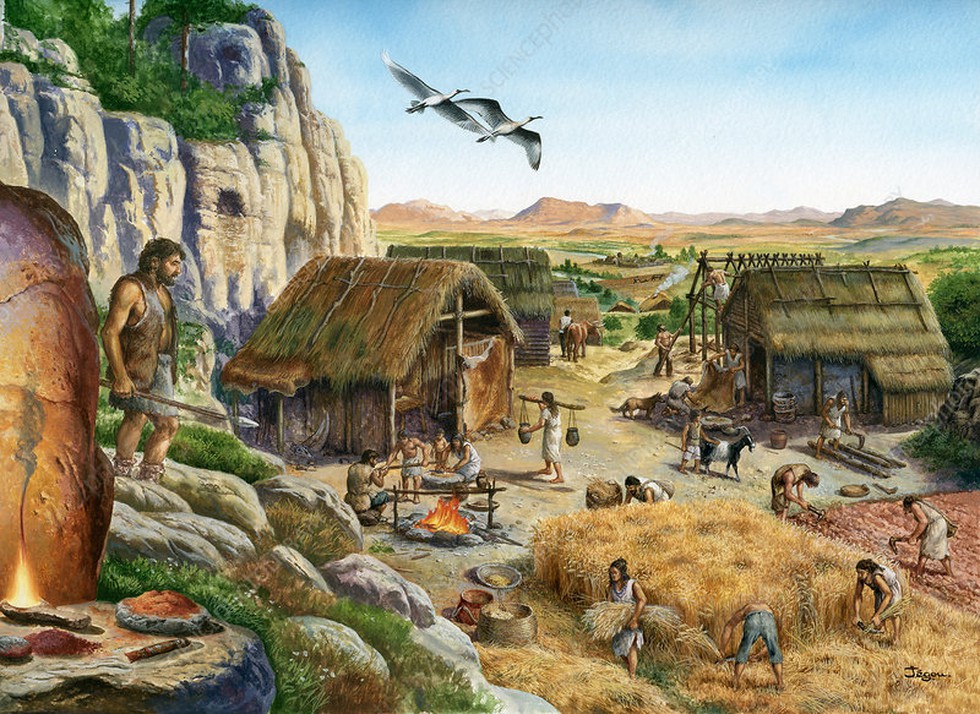
About Neolithic Period:
- The Neolithic Period, also called the New Stone Age, is the final stage of cultural evolution or technological development among prehistoric humans.
- The term Neolithic is most frequently used in connection with agriculture, which is the time when cereal cultivation and animal domestication were introduced.
- It is characterized by the beginning of a settled human lifestyle.
- The Neolithic stage of development was attained during the Holocene Epoch (the last 11,700 years of Earth’s history).
- The starting point of the Neolithic is generally thought to have occurred sometime around 10,000 BCE.
- The Neolithic followed the Paleolithic Period, or the age of chipped-stone tools, and preceded the Bronze Age, or the early period of metal tools.
- The Neolithic Revolution started in the Fertile Crescent, a region of the Middle East, where humans first took up farming.
- Features of the Neolithic Age:
- It was characterized by stone tools shaped by polishing or grinding, dependence on domesticated plants or animals, settlement in permanent villages, and the appearance of such crafts as pottery and weaving.
- The houses were built of mud and reed in rectangular or circular shapes.
- Alcohol was first produced during this period, and architecture, as well as its interior and exterior decoration, first appeared.
- Status objects like elaborate pottery and carved jades were placed in tombs during the Neolithic period. This practice suggests two things: Neolithic people’s belief in the afterlife and the emergence of social classes. Only important and wealthy individuals had the privilege of being buried with these precious objects
- End of the Neolithic Age:
- Towards the end of the Neolithic era, copper metallurgy is introduced, which marks a transition period to the Bronze Age, sometimes referred to as the Chalcolithic or Eneolithic Era.
- In time, bronze became the primary material for tools and weapons, and a good part of the stone technology became obsolete, signalling the end of the Neolithic and thus the Stone Age.
- Some of the important Neolithic sites in India include Burzahom in Kashmir, Chiron in Bihar and Uttar in Andhra Pradesh, and Edakkal caves in Kerala.
Prelims Pointers
Feb. 29, 2024
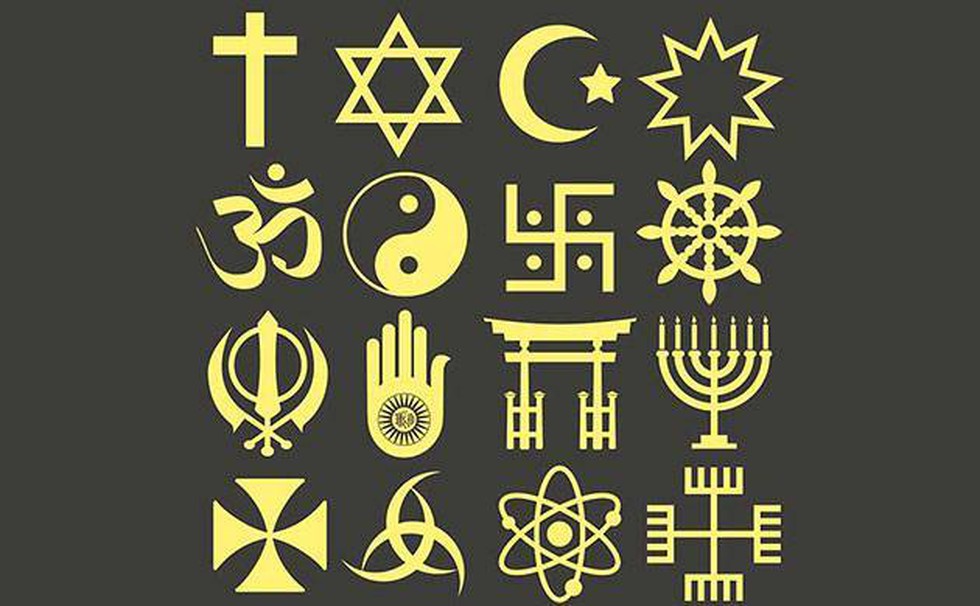
About Article 25 of the Indian Constitution:
- Article 25 says that all persons are equally entitled to freedom of conscience and the right to freely profess, practice, and propagate religion. The implications of these are:
- Freedom of conscience: Inner freedom of an individual to mould his relation with God or Creatures in whatever way he desires.
- Right to profess: Declaration of one’s religious beliefs and faith openly and freely.
- Right to practice: Performance of religious worship, rituals, ceremonies, and exhibition of beliefs and ideas.
- Right to propagate: Transmission and dissemination of one’s religious beliefs to others or exposition of the tenets of one’s religion. But it does not include the right to convert another person to one’s religion. Forcible conversions impinge on the ‘freedom of conscience’ guaranteed to all persons alike.
- Thus, Article 25 covers not only religious beliefs (doctrines) but also religious practices (rituals).
- Moreover, these rights are available to all persons–citizens as well as non-citizens.
- However, these rights are subject to public order, morality, health, and other provisions relating to fundamental rights.
- Further, nothing in this article shall affect the operation of any existing law or prevent the State from making any law to:
- regulate or restrict any economic, financial, political, or other secular activity associated with religious practice;
- provide for social welfare and reform, or throw open Hindu religious institutions of a public character to all classes and sections of Hindus;
- Article 25 also contains two explanations: one, the wearing and carrying of kirpans is to be included in the profession of the Sikh religion; and two, the Hindus, in this context, include Sikhs, Jains, and Buddhists.
Prelims Pointers
Feb. 29, 2024
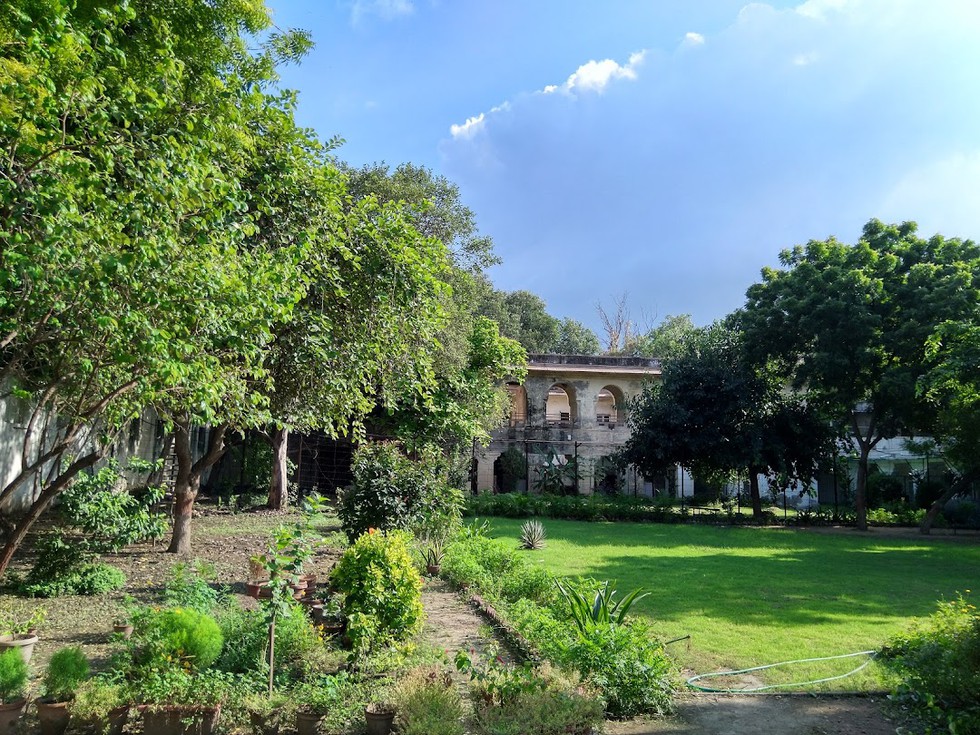
About Maulana Azad Education Foundation (MAEF):
- MAEF was established on the occasion of Maulana Abul Kalam Azad's birth centenary celebrations (1989).
- The Foundation is a voluntary, non-political, non-profit making social service organization.
- It was registered under the Societies Registration Act, 1860, on 6th July 1989.
- The Foundation was established to promote education amongst the educationally backward minorities in particular and other weaker sections in general.
- It is fully funded by the Ministry of Minority Affairs, Govt. of India.
- Structure:
- The Hon'ble Minister of Minority Affairs is Ex-Officio President of the Foundation.
- The General Body of the Foundation consists of 15 members, of which six are ex-officio, including the President, MAEF, and the remaining nine are nominated by the President, MAEF.
- The management of the Foundation is entrusted with its Governing Body, which consists of six members (including the President, MAEF) selected from amongst the members of the General Body.
- Through programmes like the Begum Hazrat Mahal National Scholarship Scheme and the Khwaja Gharib Nawaz Skill Development Training Scheme, the Foundation worked to improve employment opportunities for minorities and awarded scholarships to deserving girls from religious minorities.
Prelims Pointers
Feb. 29, 2024
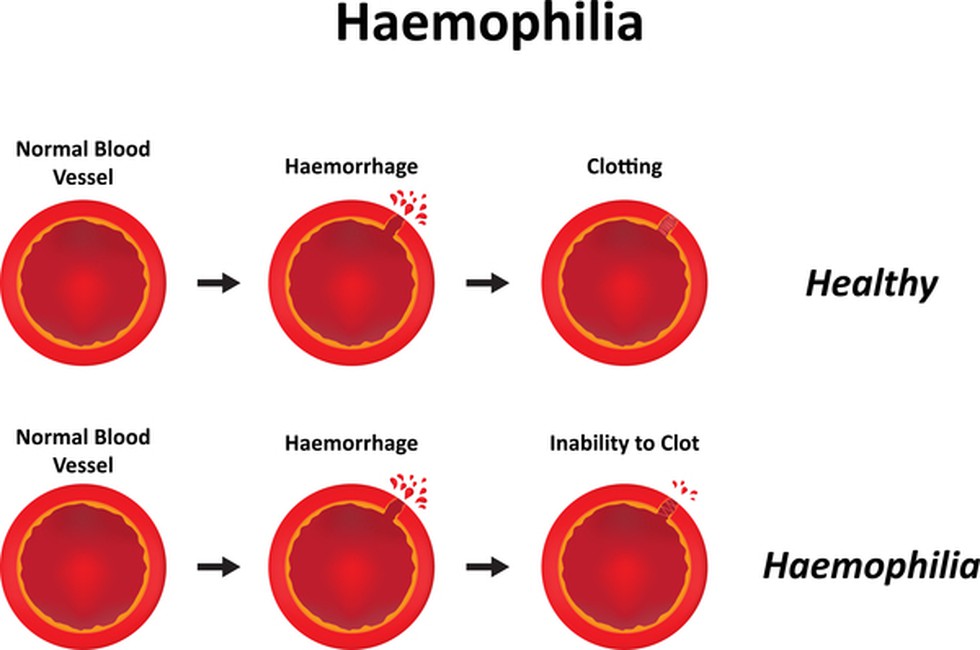
About Haemophilia A:
- It is a genetic disorder that affects the body’s ability to form blood clots.
- It is a rare disorder in which the blood doesn't clot in the typical way because it doesn't have enough blood-clotting proteins.
- It is a sex linked disorder. The gene for haemophilia is carried on the X chromosome.
- Causes: It is caused by a mutation or change, in one of the genes, that provides instructions for making the clotting factor proteins needed to form a blood clot. This type is caused by a lack or decrease of clotting factor VIII.
- Symptoms: Signs and symptoms of haemophilia vary, depending on the level of clotting factors.
- Males are much more likely to have haemophilia than are females.
- Treatment:
- It involves replacement therapy, which involves infusing clotting factor concentrates into the bloodstream to help the blood clot.
- Other treatments may include medications to promote clotting or surgery to repair damage caused by bleeding.
What is Gene therapy?
- It is a technique that modifies a person’s genes to treat or cure disease.
- Gene therapies can work by several mechanisms:
- Replacing a disease-causing gene with a healthy copy of the gene
- Inactivating a disease-causing gene that is not functioning properly
- Introducing a new or modified gene into the body to help treat a disease
- Gene therapy products are being studied to treat diseases including cancer, genetic diseases, and infectious diseases.
Prelims Pointers
Feb. 29, 2024
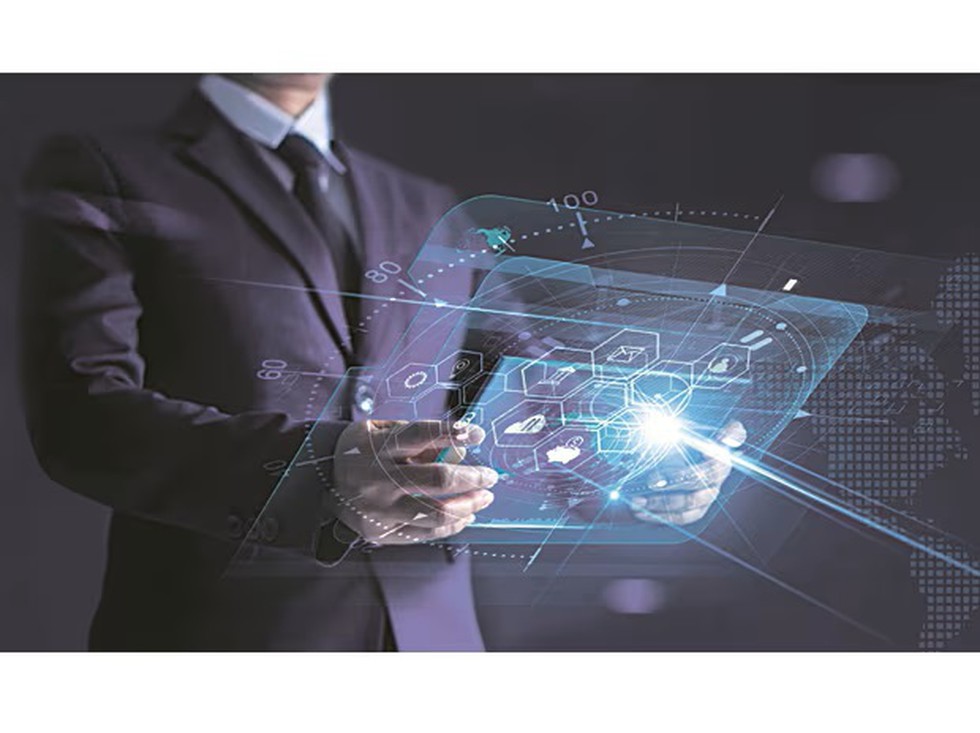
About Regulatory Sandbox scheme:
- It refers to the live testing of new products or services in a controlled regulatory environment.
- It acts as a "safe space" for business as the regulators may or may not permit certain relaxations for the limited purpose of testing.
- It can provide a structured avenue for the regulator to engage with the ecosystem and to develop innovation-enabling or innovation-responsive regulations that facilitate the delivery of relevant, low-cost financial products.
- It is potentially an important tool which enables more dynamic, evidence-based regulatory environments which learn from and evolve with, emerging technologies.
- Objectives:
- It provides an environment to innovative technology-led entities for limited-scale testing of a new product or service that may or may not involve some relaxation in a regulatory requirement before a wider-scale launch.
- The RS is, at its core, a formal regulatory programme for market participants to test new products, services or business models with customers in a live environment, subject to certain safeguards and oversight.
- The proposed financial service to be launched under the RS should include new or emerging technology, or the use of existing technology in an innovative way and should address a problem, or bring benefits to consumers.
- To foster responsible innovation in financial services, promote efficiency and bring benefit to consumers.
- The RBI issued the 'Enabling Framework for Regulatory Sandbox' in August 2019, after wide-ranging consultations with stakeholders.
- The recently updated framework requires:
- The sandbox entities to ensure compliance with provisions of the Digital Personal Data Protection Act, of 2023.
- The timelines of the various stages of the Regulatory Sandbox process have been revised from seven months to nine months
- The target applicants for entry to the RS are fintech companies, including startups, banks, financial institutions, any other company, Limited Liability Partnership (LLP) and partnership firms, partnering with or providing support to financial services businesses.
Prelims Pointers
Feb. 29, 2024
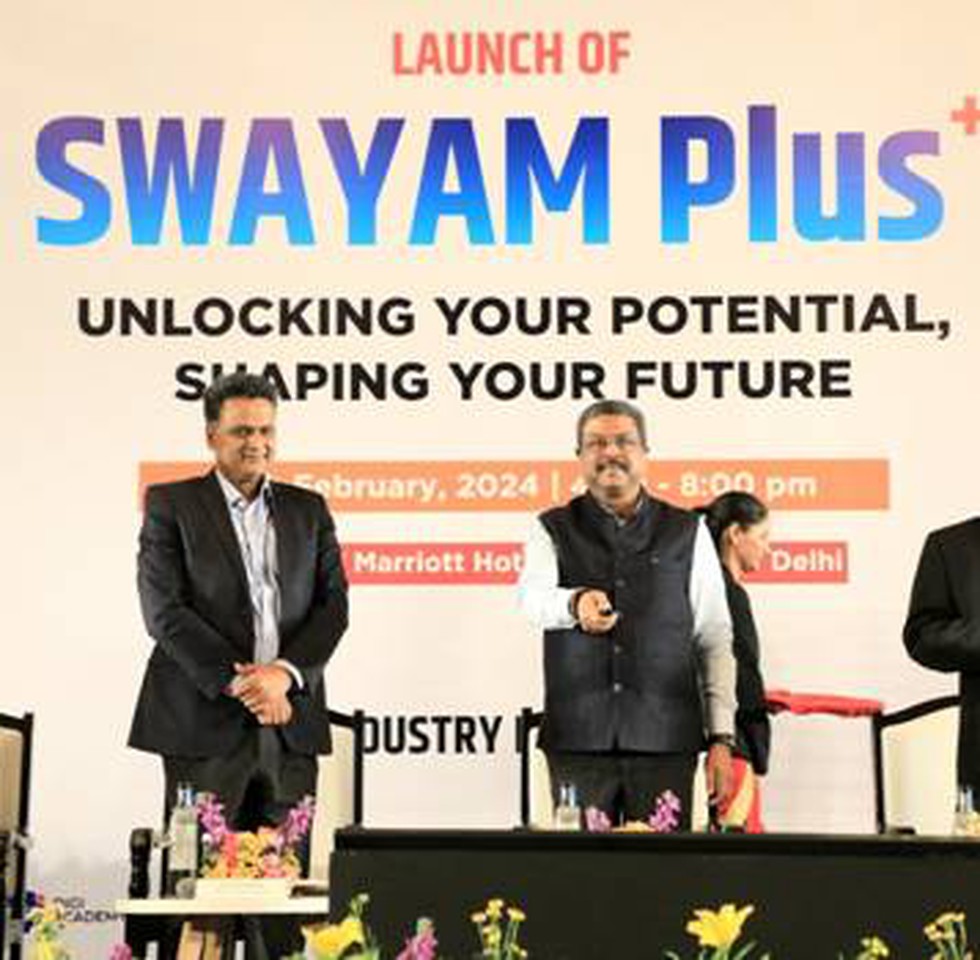
About SWAYAM Plus platform:
- It offers courses developed collaboratively with the industry.
- This platform aims to enhance the employability of both college students and lifelong learners.
- It will offer programmes in sectors like Manufacturing, Energy, Computer Science and Engineering/IT/ITES, Management Studies, Healthcare, Hospitality and Tourism besides Indian Knowledge Systems.
- Objectives
- It primarily focuses on building an ecosystem for all stakeholders in professional and career development, including learners, course providers, industry, academia, and strategic partners.
- It enables a mechanism that provides credit recognition for high-quality certifications and courses offered by the best industry and academia partners.
- Reaching a large learner base by catering to learning across the country, with a focus on reaching learners from tiers 2 and 3 towns and rural areas.
- It also envisions bringing in features such as access to mentorship, scholarships and job placements as value-added services in due course of time, thus building a digital ecosystem for learners to pursue upskilling and re-skilling at all levels, namely certificate, diploma or degree.
- It features innovative elements such as multilingual content (available in 12 major Indian languages of the country), AI-enabled guidance, credit recognition, and pathways to employment.
- These employability and professional development‐focused programmes have been developed with industry players including L&T, Microsoft and CISCO.
- The Indian Institute of Technology Madras (IIT Madras) will be operating this Platform.
Prelims Pointers
Feb. 29, 2024
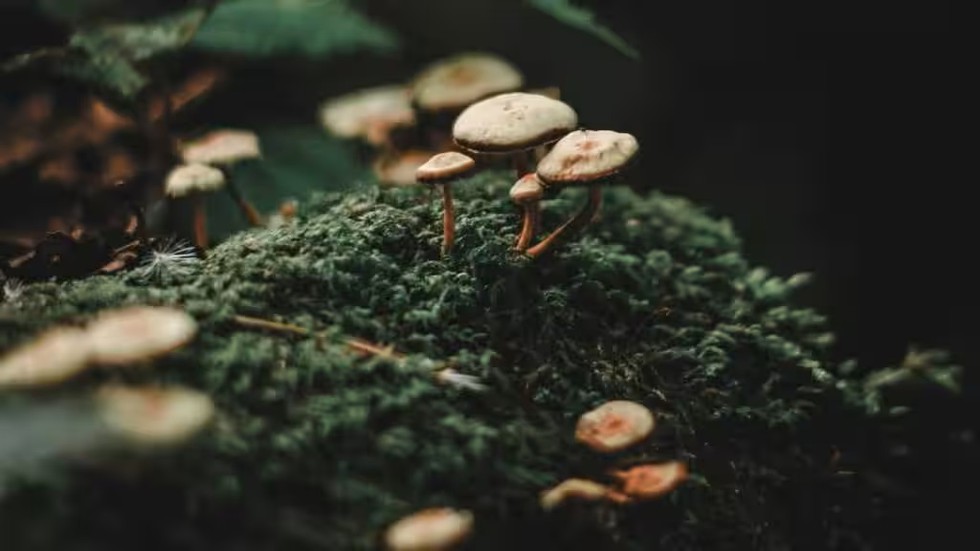
About Roen olmi:
- It is a mushroom of the Termitomyces species.
- It grows on termite hills and is locally known as ‘roen olmi’ in Goa.
- It is an edible wild mushroom popular among Goans and consumed during the monsoons.
- These mushrooms have no independent existence. They grow only in association with termites.
- Habitat: It is endemic to the Western Ghats, where the thick forest cover and high humidity provide an ideal breeding ground.
- Ecological significance: It plays a very important role as a powerful biodegrading fungus in forest and grassland ecosystems converting 50% of dead plant material on the ground into rich soil.
- In fact, all Termitomyces species are edible and have unique food value attributed to their texture, flavour, nutrient content, and beneficial mediational properties.
- Additionally, Termito-myces have been recognized for their ethno-medicinal importance in various indigenous communities throughout Asia and Africa.
- Termitomyces species possess various beneficial antioxidant and antimicrobial properties
Prelims Pointers
Feb. 29, 2024
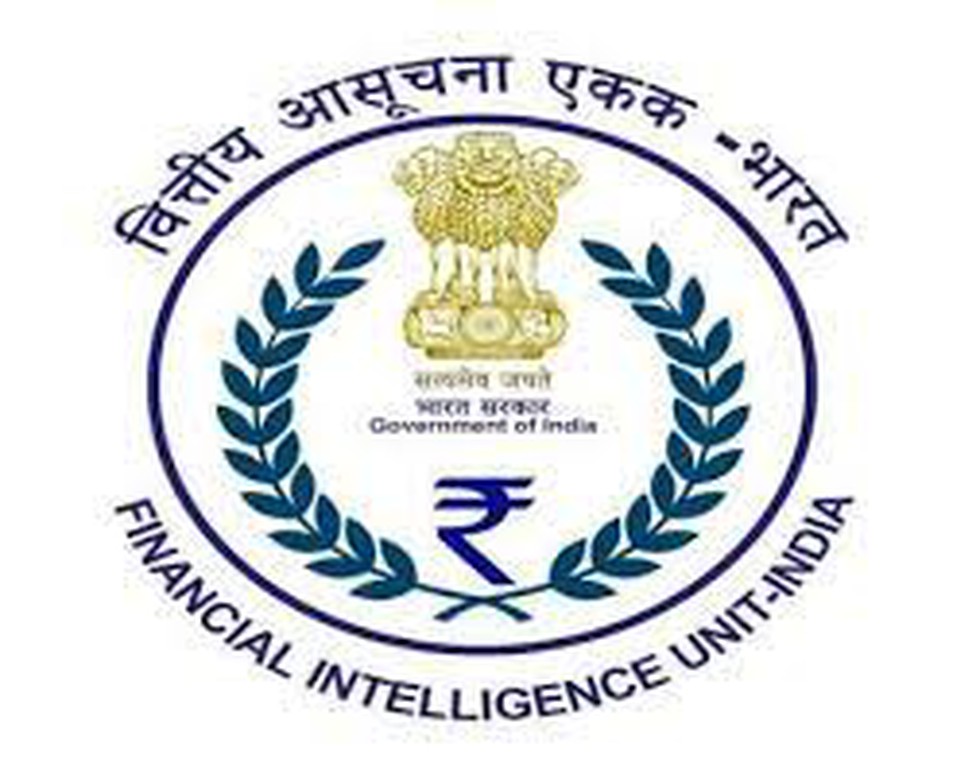
About Financial Intelligence Unit:
- It was set up by the Government of India in November 2004.
- It is the central national agency responsible for receiving, processing, analyzing and disseminating information relating to suspect financial transactions.
- It is also responsible for coordinating and strengthening efforts of national and international intelligence, investigation and enforcement agencies in pursuing global efforts against money laundering and financing of terrorism.
- It is an independent body reporting directly to the Economic Intelligence Council (EIC) headed by the Union Finance Minister.
- Functions:
- Collection of Information: Act as the central reception point for receiving Cash Transaction reports (CTRs), Non-Profit Organisation Transaction Reports (NTRs), Cross Border Wire Transfer Reports (CBWTRs), Reports on the Purchase or Sale of Immovable Property (IPRs) and Suspicious Transaction Reports (STRs) from various reporting entities.
- Analysis of Information: Analyze received information to uncover patterns of transactions suggesting suspicion of money laundering and related crimes.
- Sharing of Information: Share information with national intelligence/law enforcement agencies, national regulatory authorities and foreign Financial Intelligence Units.
- Act as Central Repository: Establish and maintain a national database based on reports received from reporting entities.
- Coordination: Coordinate and strengthen the collection and sharing of financial intelligence through an effective national, regional and global network to combat money laundering and related crimes.
- Research and Analysis: Monitor and identify strategic key areas on money laundering trends, typologies and developments.
Feb. 28, 2024
Prelims Pointers
Feb. 28, 2024
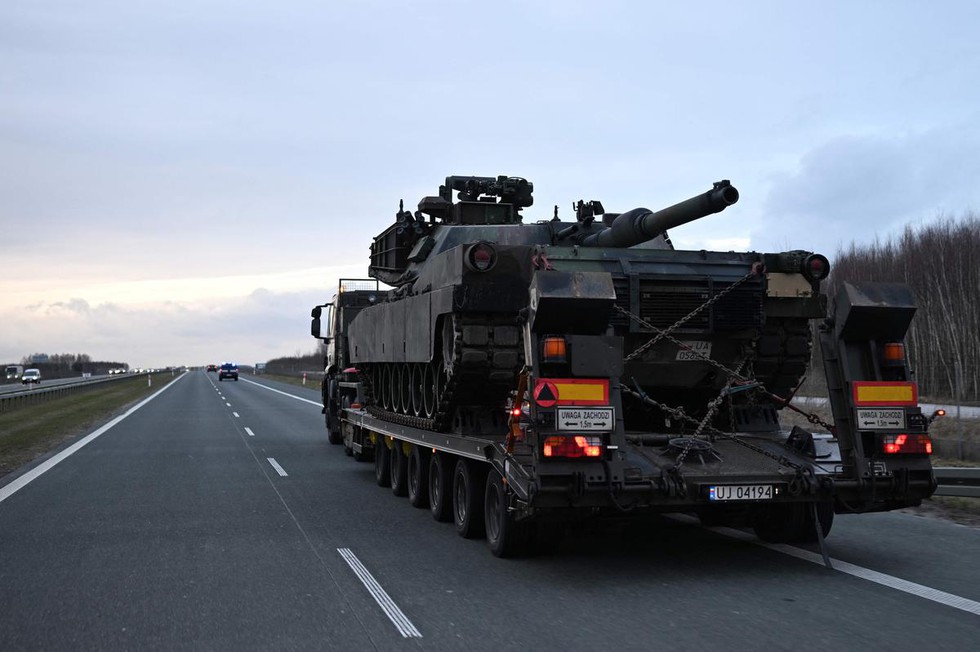
स्टीडफ़ास्ट डिफेंडर 2024 के बारे में:
- यह शीतयुद्ध काल के बाद से नाटो का सबसे व्यापक सैन्य अभ्यास है।
- इसमें 31 सदस्य देशों और नाटो भागीदार स्वीडन की 90,000 सेनाएं शामिल हैं और यह विभिन्न नाटो देशों में आयोजित किया जाता है।
- इस अभ्यास में सैन्य हार्डवेयर की एक प्रभावशाली श्रृंखला शामिल होगी, जिसमें विमान वाहक से लेकर विध्वंसक तक 50 से अधिक नौसैनिक जहाज और लड़ाकू जेट, हेलीकॉप्टर और ड्रोन सहित 80 से अधिक इकाइयों की एक दुर्जेय वायु टुकड़ी शामिल होगी।
- 133 टैंकों और 533 पैदल सेना से लड़ने वाले वाहनों सहित कम से कम 1,100 लड़ाकू वाहनों के साथ नाटो की जमीनी क्षमताओं का प्रदर्शन करते हुए जमीनी सेना भी समान रूप से मजबूत है।
- स्टीडफ़ास्ट डिफेंडर, 2024 का उद्देश्य नाटो की नई क्षेत्रीय रक्षा योजनाओं का परीक्षण करना है।
- ये योजनाएं दशकों में अपनी तरह की पहली, संभावित खतरों के लिए गठबंधन की प्रतिक्रिया तंत्र की रूपरेखा तैयार करती हैं, विशेष रूप से रूसी आक्रामकता के संबंध में चिंताओं को संबोधित करती हैं।
NATO क्या है?
- 1949 में वाशिंगटन संधि पर हस्ताक्षर के साथ गठित, नाटो उत्तरी अमेरिका और यूरोप के 31 देशों का एक सुरक्षा गठबंधन है।
- नाटो का मूल लक्ष्य राजनीतिक और सैन्य तरीकों से मित्र राष्ट्रों की स्वतंत्रता और सुरक्षा की रक्षा करना है।
- यह सामूहिक रक्षा की एक प्रणाली है, जहाँ स्वतंत्र सदस्य देश किसी बाहरी पक्ष द्वारा किए गए हमले की स्थिति में आपसी रक्षा के लिए सहमत होते हैं।
- वाशिंगटन संधि के अनुच्छेद 5 में कहा गया है कि एक सहयोगी के खिलाफ हमला सभी के खिलाफ हमला है।
- यह लेख गठबंधन का मूल, सामूहिक रक्षा का वादा बनाता है।
-
मुख्यालय: ब्रुसेल्स, बेल्जियम।
-
कार्य
- राजनीतिक: नाटो लोकतांत्रिक मूल्यों को बढ़ावा देता है और सदस्यों को समस्याओं को हल करने, विश्वास बनाने और लंबे समय में संघर्ष को रोकने के लिए रक्षा और सुरक्षा से संबंधित मुद्दों पर परामर्श और सहयोग करने में सक्षम बनाता है।
- सेना: NATO विवादों के शांतिपूर्ण समाधान के लिए प्रतिबद्ध है। यदि कूटनीतिक प्रयास विफल हो जाते हैं, तो उसके पास संकट-प्रबंधन अभियान चलाने की सैन्य शक्ति है। इन्हें वाशिंगटन संधि के अनुच्छेद 5 के तहत या संयुक्त राष्ट्र के आदेश के तहत अकेले या अन्य देशों और अंतरराष्ट्रीय संगठनों के सहयोग से किया जाता है।
Prelims Pointers
Feb. 28, 2024
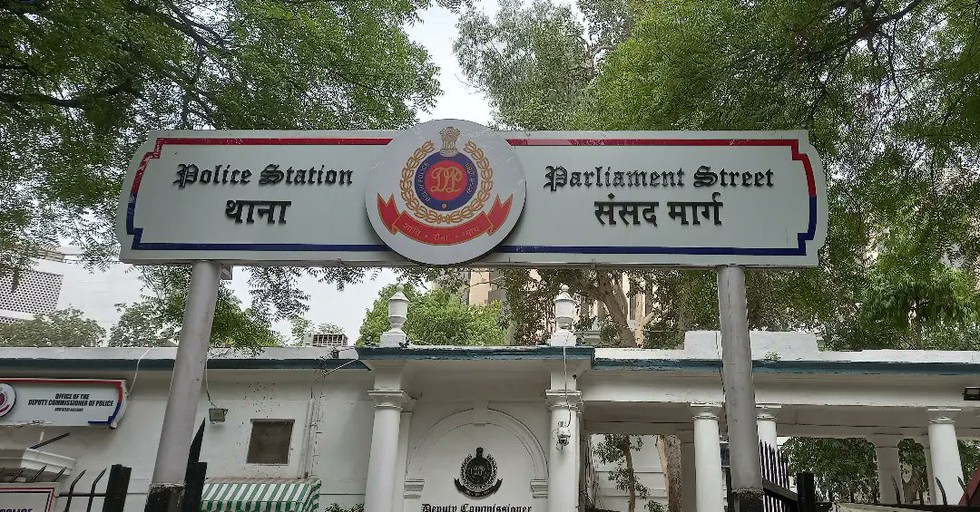
About General Diary (GD):
- General Diary, also called Station Diary or Daily Diary in some States, is maintained under the provisions of Section 44 of the Police Act, 1861, in the States to which it applies, or under the respective provisions of the Police Act(s) applicable to a State or under the Police Manual of a State, as the case may be.
- Section 44 of the Police Act, 1861 states that it shall be the duty of every officer in charge of a police station to keep a general diary in such form as shall, from time to time, be prescribed by the State Government and to record therein all complaints and charges preferred, the names of all persons arrested, the names of the complainants, the offences charged against them, the weapons or property that shall have been taken from their possession or otherwise, and the names of the witnesses who shall have been examined.
- It is a record of all important transactions/events taking place in a police station, including the departure and arrival of police staff, the handing over or taking over of charges, the arrest of a person, details of law-and-order duties, the visit of senior officers, etc.
- Additionally, the GD summarizes each First Information Report (FIR) registered at the police station, as FIR registration is a significant event there.
- Simultaneously, the GD entry reference is noted in the FIR Book, while the FIR number is mentioned in the GD entry. This parallel documentation ensures that both records are kept up to date.
- The GD is maintained in chronological order, with a new entry starting with number 1 each day.
What is a First Information Report (FIR)?
- It is a written document prepared by a Police officer based on information given by an aggrieved person or any other person, either in writing or made orally, about the commission of a Cognizable Offence.
- The investigation is started only after the filing of the FIR.
- Who can lodge an FIR?
- Anyone who knows about the commission of a cognizable offence can file an FIR. It is not necessary that only the victim of the crime should file an FIR.
- A police officer who comes to know about a cognizable offence can file an FIR himself/herself.
- An FIR can only be lodged in cases of cognizable offences.
General Diary (GD) vs. First Information Report (FIR):
- A copy of each FIR is sent to the superior officers and to the concerned Judicial Magistrate.
- A copy of GD is not sent to the Judicial Magistrate, though its copy is sent to a superior police officer.
- The Magistrate of the district shall be at liberty to call for any inspection of such GD.
- The signature of the complainant is obtained in the FIR Book as and when the complaint is given to the police station. On the other hand, there is no such requirement to obtain the signature of the complainant in the general diary.
- The general diary is an internal police record, while in the case of F.I.R., a copy of these will be provided to the complainant.
Prelims Pointers
Feb. 28, 2024
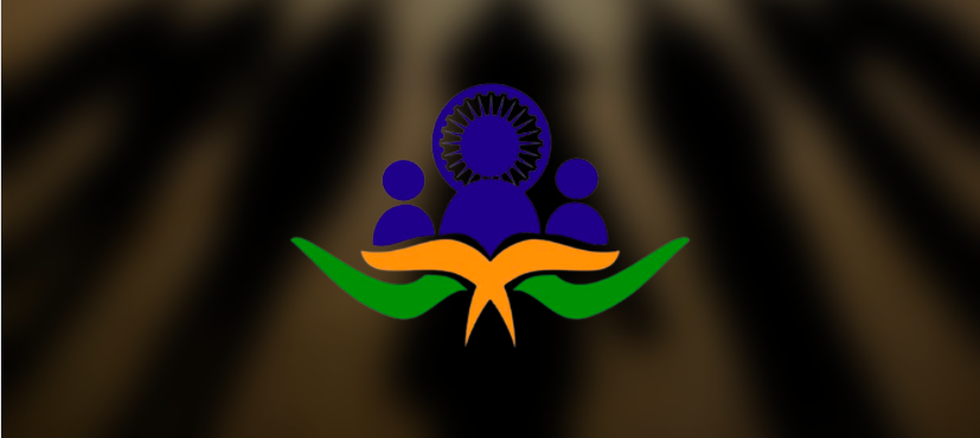
About Lokpal:
- It is a statutory body established under the Lokpal and Lokayuktas Act 2013.
- Mandate: To inquire into allegations of corruption against certain public functionaries and for related matters.
- Organisational Structure:
- The Lokpal will consist of a chairperson and a maximum of eight members.
- The Chairperson should be either the former Chief Justice of India, or a former Judge of the Supreme Court, or an eminent person who fulfils the eligibility criteria as specified.
- Out of the maximum eight members, half will be judicial members. The judicial member of the Lokpal should be either a former Judge of the Supreme Court or a former Chief Justice of a High Court.
- A minimum of fifty per cent of the Members will be from SC / ST / OBC / Minorities and women.
- How are members appointed?
- The Chairperson and the Members are appointed by the President of India on the recommendation of a selection committee composed of the Prime Minister as the Chairperson, the Speaker of Lok Sabha, the Leader of Opposition in Lok Sabha, the Chief Justice of India or a Judge nominated by him/her, and one eminent jurist.
- They hold office for aterm of five years from the date on which they enter upon the office or until they attain the age of 70 years, whichever is earlier.
- The salary, allowances, and other conditions of services of the Chairperson are the same as that of the Chief Justice of India.
- The salary, allowances, and other conditions of services of the members are the same as that of a Judge of the Supreme Court.
- Jurisdiction:
- It has jurisdiction to inquire into allegations of corruption against anyone who is or has been Prime Minister, a Minister in the Union government, or a Member of Parliament, as well as officials of the Union Government under Groups A, B, C, and D.
- It covers chairpersons, members, officers, and directors of any board, corporation, society, trust, or autonomous body either established by an Act of Parliament or wholly or partly funded by the Union or State government.
- It also covers any society, trust, or body that receives a foreign contribution above Rs 10 lakh.
- Exceptions for Prime Minister:
- Lokpal cannot inquire into allegations against the PM relating to international relations, external and internal security, public order, atomic energy, and space.
- Also, complaints against the PM are not to be probed unless the full Lokpal bench considers the initiation of the inquiry andat least 2/3rds of the members approve it.
- Powers of Lokpal:
- It has powers to superintendence over and to give direction to the CBI.
- If it has referred a case to the CBI, the investigating officer in such a case cannot be transferred without the approval of Lokpal.
- Powers to authorize CBI for search and seizure operations connected to such cases.
- The Inquiry Wing of the Lokpal has been vested with the powers of a civil court.
- Lokpal has powers of confiscation of assets, proceeds, receipts, and benefits arising or procured by means of corruption in special circumstances.
- Lokpal has the power to recommend the transfer or suspension of public servants connected with the allegation of corruption.
- Lokpal has the power to give directions to prevent the destruction of records during the preliminary inquiry.
- In terms of Section 48 of the said Act, the Lokpal is required to present annually to the President a report on the work done by it, which is caused to be laid in both the Houses of Parliament.
Prelims Pointers
Feb. 28, 2024

About Steadfast Defender 2024:
- It is NATO’s most extensive military exercise since the Cold War era.
- It involves 90,000 forces from 31 member countries and NATO partner Sweden and is conducted across various NATO nations.
- The exercise will feature an impressive array of military hardware, including over 50 naval vessels ranging from aircraft carriers to destroyers, and a formidable air contingent of more than 80 units comprising fighter jets, helicopters, and drones.
- The ground forces are equally robust, with at least 1,100 combat vehicles, including 133 tanks and 533 infantry fighting vehicles, demonstrating NATO’s ground capabilities.
- The purpose of Steadfast Defender 2024 is to put NATO's new regional defense plans to the test.
- These plans, the first of their kind in decades, outline the alliance's response mechanisms to potential threats, notably addressing concerns regarding Russian aggression.
What is NATO?
- Formed in 1949 with the signing of the Washington Treaty, NATO is a security alliance of 31 countries from North America and Europe.
- NATO’s fundamental goal is to safeguard the Allies’ freedom and security by political and military means.
- It is a system of collective defence where independent member states agree for mutual defence in case of any attack by an external party.
- Article 5 of the Washington Treaty states that an attack against one ally is an attack against all.
- This article forms the core of the Alliance, a promise of collective defense.
- Headquarters: Brussels, Belgium.
- Functions:
- Political: NATO promotes democratic values and enables members to consult and cooperate on defence and security-related issues to solve problems, build trust, and, in the long run, prevent conflict.
- Military: NATO is committed to the peaceful resolution of disputes. If diplomatic efforts fail, it has the military power to undertake crisis-management operations. These are carried out under Article 5 of the Washington Treaty or under a United Nations mandate, alone or in cooperation with other countries and international organisations.
Prelims Pointers
Feb. 28, 2024
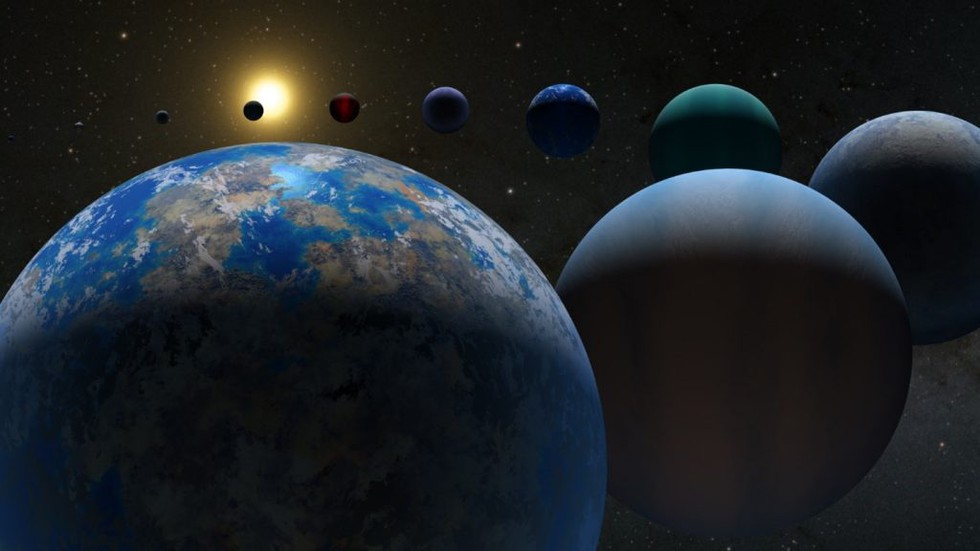
About the International Astronomical Union (IAU):
- The IAU is a senior body governing international professional astronomical activities worldwide.
- It was established in 1919 as the first of a series of international unions for the advancement of specific branches of science.
- Its mission is to promote and safeguard the science of astronomy in all its aspects, including research, communication, education, and development, through international cooperation.
- The IAU is made up of various divisions, commissions, and working groups representing the various areas of astronomical research, teaching, and other endeavours.
- Membership:
- Its individual members are professional astronomers from all over the world, at the Ph.D. level and beyond, who are active in professional research, education, and outreach in astronomy.
- The IAU also has junior members.
- IAU membership spans 92 countries. Out of those countries, 85 are National Members.
- IAU activities range from the definition of fundamental astronomical and dynamical constants and unambiguous astronomical nomenclature, rapid dissemination of new discoveries, organization of international observing campaigns, and promotion of educational activities in astronomy to early informal discussions of possible future international large-scale facilities.
- It is the only organization recognized professionally for the naming of astronomical bodies, which it does solely on the basis of merit, history, or discoverer’s privilege.
- The IAU holds a general assembly every three years in varying parts of the world at which professional astronomers meet to discuss research, new cooperative ventures, and similar matters of professional interest.
- The IAU also works to promote research, education, and public outreach activities in astronomy for the public.
- Headquarters: Paris, France.
Prelims Pointers
Feb. 28, 2024
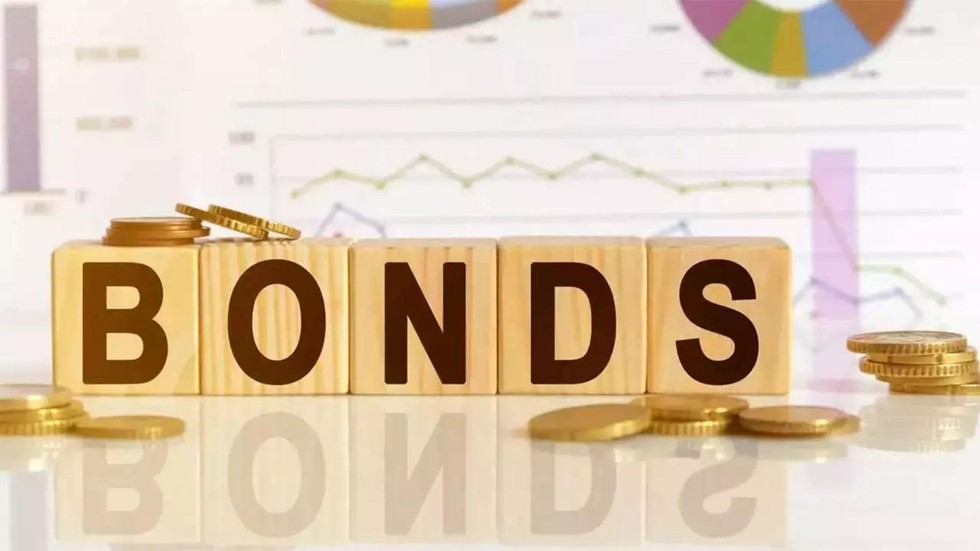
About Additional Tier-1 (AT-1) Bonds:
- AT-1 bonds are perpetual bonds with no maturity date.
- Investors in these bonds do not get their principal back.
- However, the interest continues forever. AT-1 bonds have a higher interest rate than other bonds.
- Due to the perpetual nature of AT-1 bonds, these are often treated and viewed as equity, not debt.
- How are AT-1 Bonds Issued?
- AT-1 bonds are issued by banks in accordance with the directions of the Reserve Bank of India (RBI).
- Financial institutions usually issue such bonds to fulfil their capital adequacy requirements (CAR).
- CAR is an assessment of a bank’s capital and its risk-weighted assets.
- Capital adequacy norms were formulated under the Basel III accord of 2009 after the credit crisis of 2008.
- The money raised through these bonds is kept aside as a shock absorber by the bank.
- These bonds are contingent convertible bonds (CoCos), a type of debt instrument that the bank can convert into equity if its capital levels fall below the specified levels. This helps the bank reduce debt while managing capital.
- AT-1 bonds have a call option, which allows the banks to buy back the bonds from the investors.
- These bonds provide high returns but also carry greater risk.
- If the banking institution fails, these bonds are at risk.
- Suppose the RBI finds a bank in an unstable condition, under pressure, and in a situation where it demands rescue. In that case, it can ask the bank to immediately withdraw their AT-1 Bonds without seeking permission from the investors, therefore making AT-1 Bonds risky.
- Further, the issuer can also skip the interest payout if it is under financial stress.
- Investors cannot return their bonds to the bank as there is no put option against these bonds. However, these bonds are listed on the stock exchanges, so the investor can liquidate them whenever needed.
- Subordinate debt: In case of default, these bonds rank lower than the other debt, which is why these are subordinate debts.
Prelims Pointers
Feb. 28, 2024
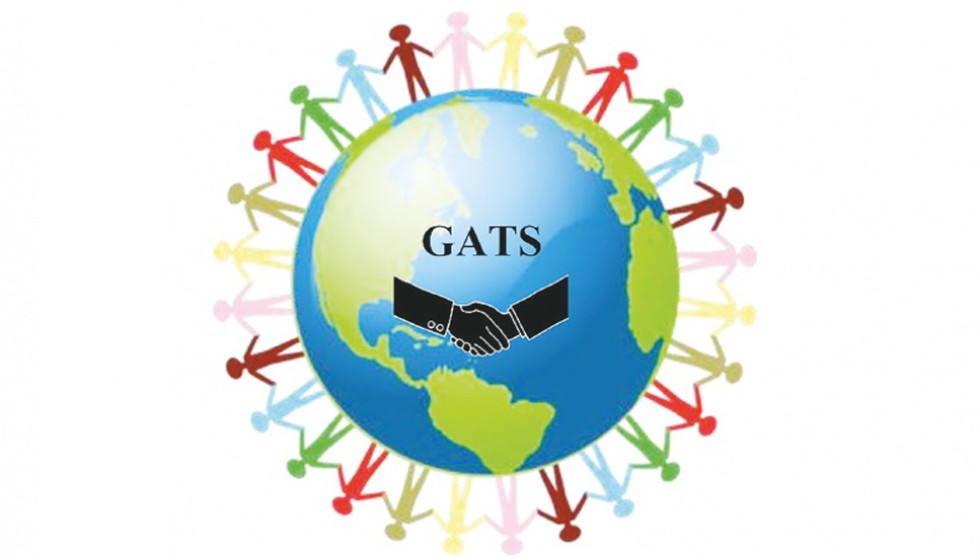
About General Agreement on Trade in Services (GATS)
- It is a treaty of the World Trade Organization (WTO).
- It was created to extend the multilateral trading system to the service sector, in the same way, the General Agreement on Tariffs and Trade (GATT) provides such a system for merchandise trade.
- It was signed at the Uruguay Round of Multilateral Trade Negotiations’ conclusion and entered into force on January 1, 1995.
- Members: All WTO members are at the same time members of the GATS including India.
- Basic obligations under the GATS may be categorized into two broad groups:
- General obligations that apply to all members and services sector.
- Specific commitments: These are obligations that apply only to the sectors inscribed in a member's schedule of commitments. Such commitments are laid down in individual schedules whose scope may vary widely between members.
- The GATS applies in principle to all service sectors, with two exceptions.
- Services supplied in the exercise of governmental authority: These are services that are supplied neither on a commercial basis nor in competition with other suppliers.
- These include social security schemes and any other public service, such as health or education that is provided at non-market conditions.
- The Annex on Air Transport Services exempts from coverage measures affecting air traffic rights and services directly related to the exercise of such rights.
New obligations
- The new obligations under their schedules in GATS seek to mitigate the unintended trade-restrictive effects of measures related to licensing requirements and procedures, qualification requirements and procedures and technical standards among themselves.
- The disciplines will be applied on a “most-favoured nation” principle, meaning that they will benefit all WTO members.
- These disciplines have been named Services Domestic Regulation (DSR) and came into force in the 13th Ministerial Conference of the WTO.
Prelims Pointers
Feb. 28, 2024
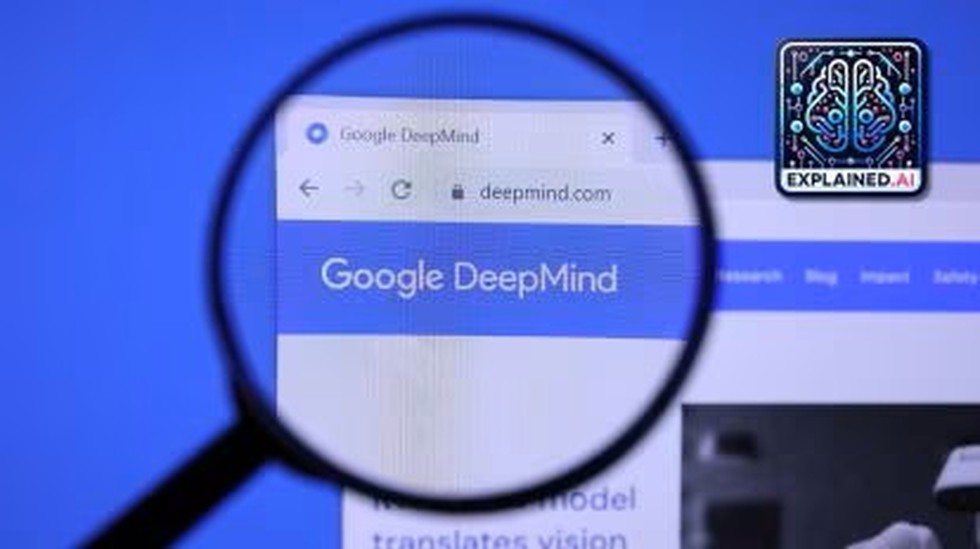
About Genie AI Model:
- It is a foundation world model that is trained on videos sourced from the Internet.
- The model can “generate an endless variety of playable (action-controllable) worlds from synthetic images, photographs, and even sketches.”
- It is the first generative interactive environment that has been trained in an unsupervised manner from unlabelled internet videos.
- Specifications: When it comes to size, Genie stands at 11B parameters and consists of a spatiotemporal video tokenizer, an autoregressive dynamics model, and a simple and scalable latent action model.
- These technical specifications let Genie act in generated environments on a frame-by-frame basis even in the absence of training, labels, or any other domain-specific requirements.
- Genie can be prompted to generate a diverse set of interactive and controllable environments although it is trained on video-only data.
- It makes playable environments from a single image prompt.
- It can be prompted with images it has never seen. This includes real-world photographs, and sketches, allowing people to interact with their imagined virtual worlds.
- It is trained more on videos of 2D platformer games and robotics.
- Genie is trained on a general method, allowing it to function on any type of domain, and it is scalable to even larger Internet datasets.
- The standout aspect of Genie is its ability to learn and reproduce controls for in-game characters exclusively from internet videos.
- This is noteworthy because internet videos do not have labels about the action that is performed in the video, or even which part of the image should be controlled.
- It allows you to create an entirely new interactive environment from a single image.
Prelims Pointers
Feb. 28, 2024
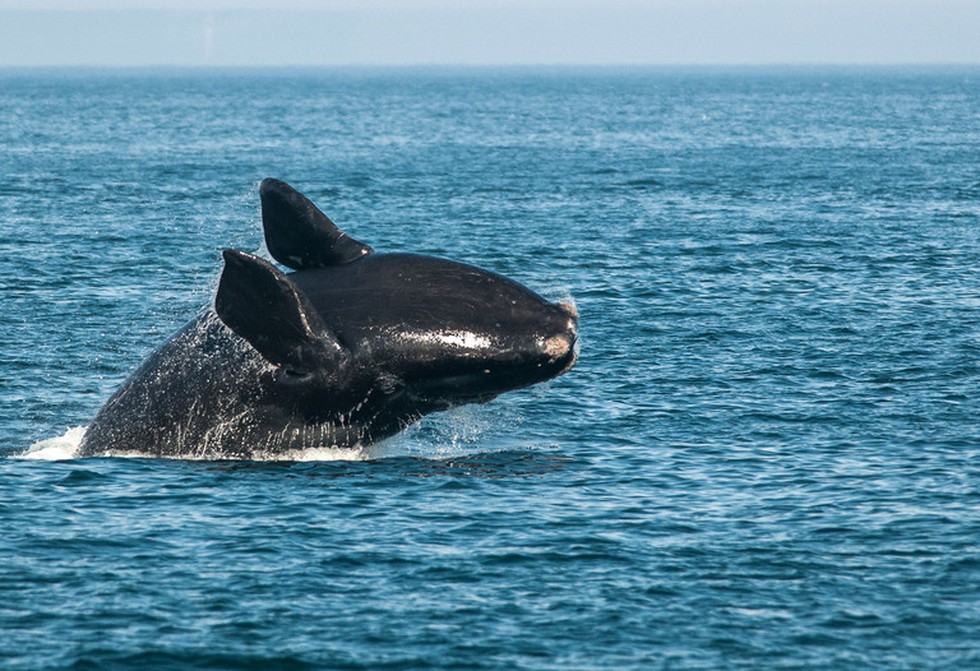
About North Atlantic right whales:
- These whales are migratory animals, spending the winter in warmer waters and migrating to the poles for cooler waters in late summer.
- These whales inhabit the temperate and subpolar waters of the North Atlantic and North Pacific oceans.
- Habitat: Depending on the time of year and which hemisphere they're found, right whales will spend much of their time near bays and peninsulas and in shallow, coastal waters.
- Distribution: These are generally restricted to the coastal waters of the East Coast of the United States and Canada.
- There are three recognized species of right whales that occur in different parts of the world. These are Southern right whales (Eubalaena australis), North Atlantic right whales (Eubalaena glacialis) and North Pacific right whales.
- These whales often skim feed at or just below the water surface, slowly swimming through clouds of plankton with their mouths half open and then straining the plankton through their long baleen plates.
- Conservation status
- IUCN: Critically endangered
- CITES: Appendix I
Prelims Pointers
Feb. 28, 2024
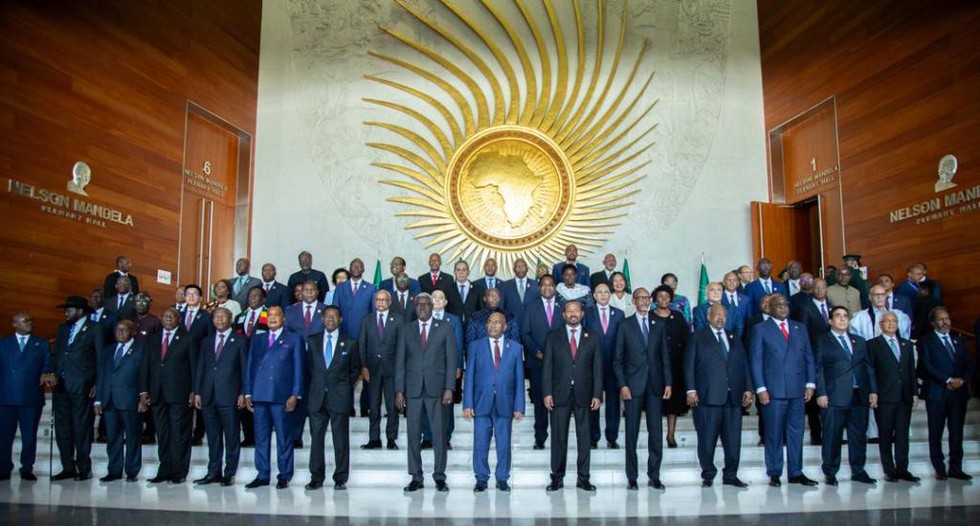
About Africa Club:
- What it is? It is the Alliance of African Multilateral Financial Institutions (which are African-owned and controlled) launched at the African Union summit.
- The initiative aims to amplify Africa's influence in the global financial system by aligning its functions with the SDGs and the African Union's Agenda 2063.
- It seeks to introduce innovative financial instruments, provide a venue for debt management discussions and foster collaborative efforts to address the specific needs of African countries.
- Its members include the African Export-Import Bank, Trade and Development Bank, Africa Finance Corporation, African Reinsurance Corporation, African Trade and Investment Development Insurance, Shelter Afrique Development Bank and ZEP – RE (PTA Reinsurance Co).
Key facts about the African Union:
- The AU is an intergovernmental organization consisting of the 55 member states that make up the countries of the African Continent.
- Basically, it is a continental union with a wide range of goals aimed at strengthening its member states both individually and collectively.
- It was officially launched in 2002 as a successor to the Organisation of African Unity (OAU, 1963-1999).
- Headquarters: Addis Ababa, Ethiopia.
Prelims Pointers
Feb. 28, 2024
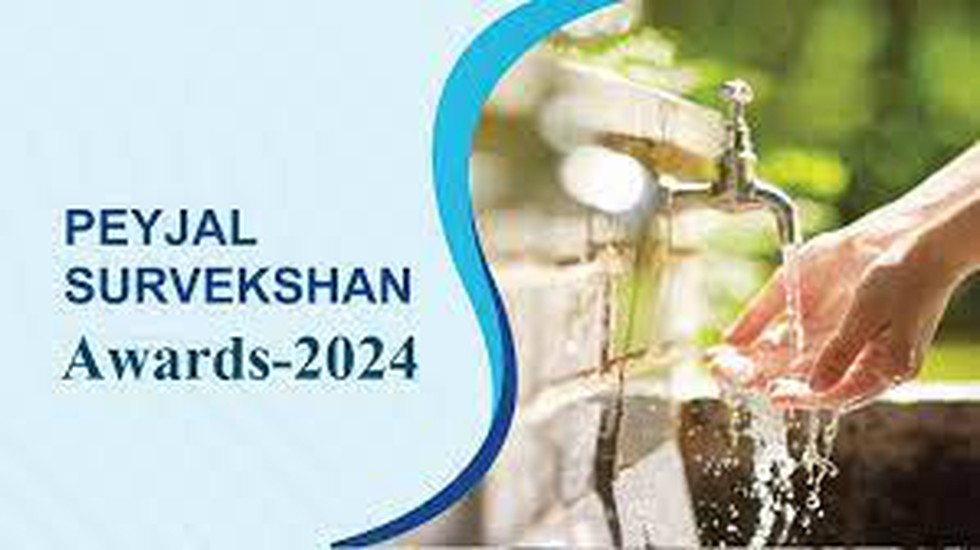
About Pey Jal Survekshan Awards:
- A distinguished array of 130 awards is set to be bestowed, reflecting the remarkable accomplishments of cities and states.
- The award consists of various categories;
- Pey Jal Gold, Silver, and Bronze City Awards, where Gold signifies top performers in their respective population categories (1 to 10 Lakh, 10 to 40 Lakh, and More than 40 Lakh),
- Silver denotes the 2nd position, and Bronze the 3rd.
- The awards extend to commendations for Best Water Body, Sustainability Champion, Reuse Champion, Water Quality, City Saturation, and AMRUT 2.0 Rotating Trophy of the Year.
- Parameters: It encompassed diverse parameters, including access, coverage, water quality at treatment plants and households, sustainability regarding the health of water bodies, availability of SCADA/ flowmeters, and reuse of treated used water.
- Cities will be graded on a star rating scale, ranging from 5 stars to No star, encapsulating their performance across these critical criteria.
- Pey Jal Survekshan ensured clean water through independent NABL lab testing at the source and citizen end.
- Using a GIS-enabled web portal, geo-tagging, and infrastructure mapping, the survey collected accurate and transparent data.
- Significance: Its results are expected to drive ULB decision-making, enhance service delivery, and foster citizen engagement, instilling a sense of ownership and knowledge dissemination about water conservation and optimal use.
What is the AMRUT Mitra initiative?
- It aims to actively involve women Self-Help Groups (SHGs) in the urban water sector, designating women as key contributors and emphasizing their role in household water management.
- The Mitras will be engaged in executing AMRUT 2.0 projects, focusing on activities such as billing, collection, leak detection, plumbing works, water quality sampling, and maintenance of infrastructure.
- The overarching goal of AMRUT Mitra is to instil a sense of ownership among women, promoting inclusivity and diversity in traditionally male-dominated sectors while ensuring access to safe drinking water for households and addressing gender inequality.
- The anticipated outcomes include upliftment of the socio-economic status of women SHGs, aligning closely with the objectives of AMRUT 2.0, increased awareness, positive community impact, and a model for future initiatives.
Feb. 27, 2024
Prelims Pointers
Feb. 27, 2024
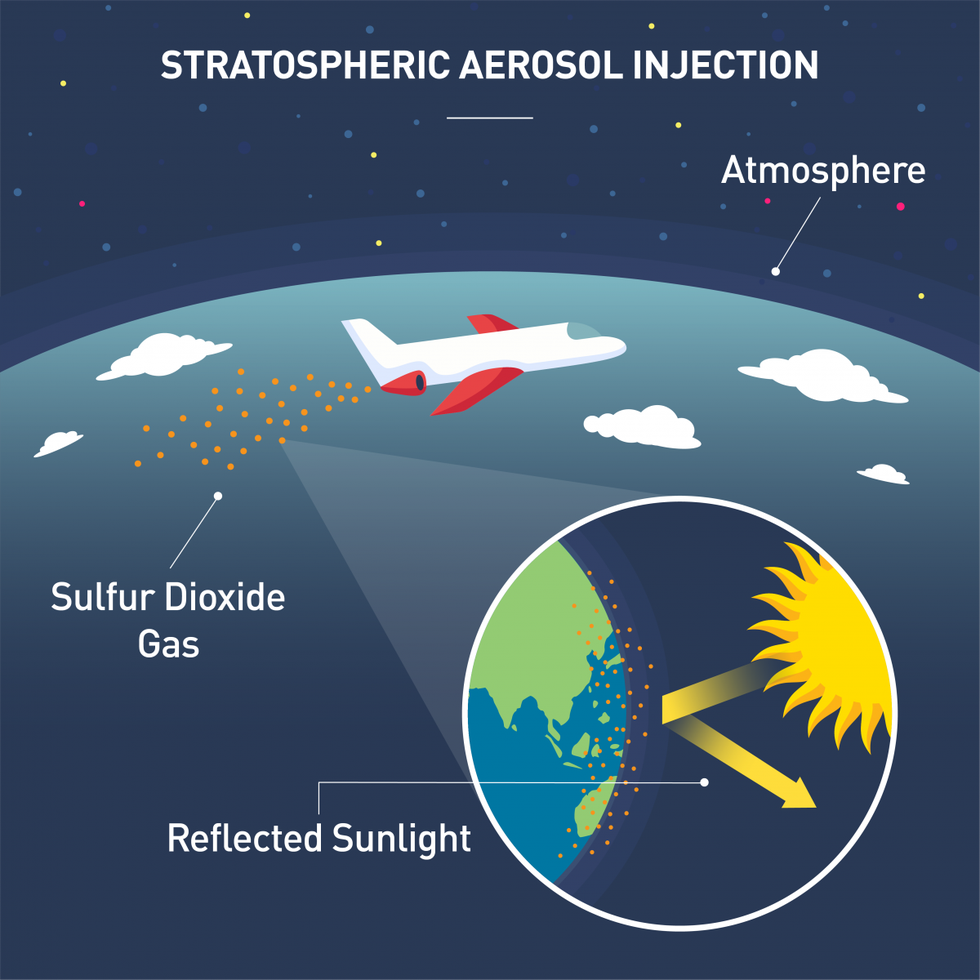
About the Stratospheric Aerosol Intervention (SAI):
- Stratospheric Aerosol Intervention (SAI), also known as Stratospheric Aerosol Injection, is a geoengineering or climate engineering approach that uses tiny reflective particles or aerosols to reflect sunlight into space in order to cool the planet and reverse or stop global warming.
- It aims to mimic the cooling effects of volcanic eruptions by injecting Sulphur dioxide (SO2) directly into the stratosphere, where it forms sunlight-reflecting sulphate aerosols.
- The 1991 eruption of Mount Pinatubo in the Philippines, often cited as the inspiration for this concept, deposited massive amounts of particulate matter and Sulphur dioxide (SO2) into the atmosphere.
- This aerosol layer was reported to have lowered average temperatures around the world by about 0.5 °C (0.9 °F) over the following few years.
- It is believed that as more radiation is scattered in the stratosphere by aerosols, less would be absorbed by the troposphere, the lower level of the atmosphere where weather primarily occurs.
- The production of such an artificial aerosol layer could be accomplished by shooting Sulphur particles into the stratosphere with cannons or dispersing them from balloons or other aircraft.
Key Facts about Aerosols:
- They are tiny solid or liquid particles suspended in air or gas.
- Aerosols can be natural, such as fog or gas from volcanic eruptions, or artificial, such as smoke from burning fossil fuels.
- Aerosol particles are either emitted directly into the atmosphere (primary aerosols) or produced in the atmosphere from precursor gases (secondary aerosols).
- Aerosol particles are tiny, but numerous, and often comprise a number of inorganic and organic substances.
- Particles with a diameter of less than 0.1 micrometre are sometimes referred to as Aitken nuclei.
- Visible forms of atmospheric aerosol plumes include smoke, smog, haze, and dust.
Prelims Pointers
Feb. 27, 2024
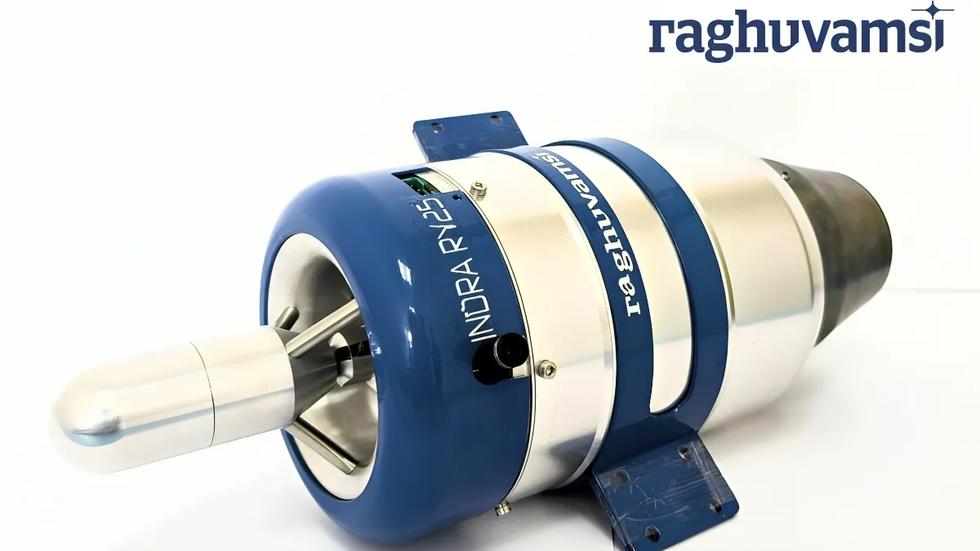
About the INDRA RV25: 240N
- It is a micro turbojet engine.
- It is designed and developed indigenously by Hyderabad-based firm Raghu Vamsi Machine Tools with support from IIT Hyderabad.
- It has primarily been developed for unmanned aerial vehicles (UAVs) or drones.
- The engine has applications in UAVs, air taxis, jetpacks, auxiliary power units, range extenders, and power generation in the future.
What is a turbojet engine?
- A turbojet engine is a jet engine which produces all of its thrust by ejecting a high-energy gas stream from the engine exhaust nozzle.
- In contrast to a turbofan or bypass engine, 100% of the air entering the intake of a turbojet engine goes through the engine core.
- Components: The component parts of a turbojet engine are the inlet, the gas turbine engine, consisting of a compressor, a combustion chamber and a turbine, and the exhaust nozzle.
- Working:
- Air is drawn into the engine through the inlet and compressed and heated by the compressor.
- Fuel is then added to the combustion chamber and ignited.
- The burning fuel adds energy to the exhaust stream by heating and expanding the air.
- Sufficient energy to drive the compressor is extracted from the exhaust stream by the turbine.
- The remainder of the exhaust energy is used to produce thrust, a process which is enhanced by the geometry of the exhaust nozzle.
- As the exhaust gas passes through the nozzle, it is accelerated to high speed as it expands, thus providing propulsion.
- The thrust produced by the engine can be selectively increased by incorporating an afterburner or re-heat into the engine design.
- Turbojet aircraft work on the principle of accelerating a relatively small mass of air to a high speed.
- As optimum efficiency is achieved when the speed of the accelerated air approximates that of the aircraft, turbojet engines do not reach peak efficiency until speeds approach Mach 2.
- Thus, turbojets have relatively poor propulsive efficiency at lower airspeeds, limiting their usefulness to high-speed aircraft.
Prelims Pointers
Feb. 27, 2024
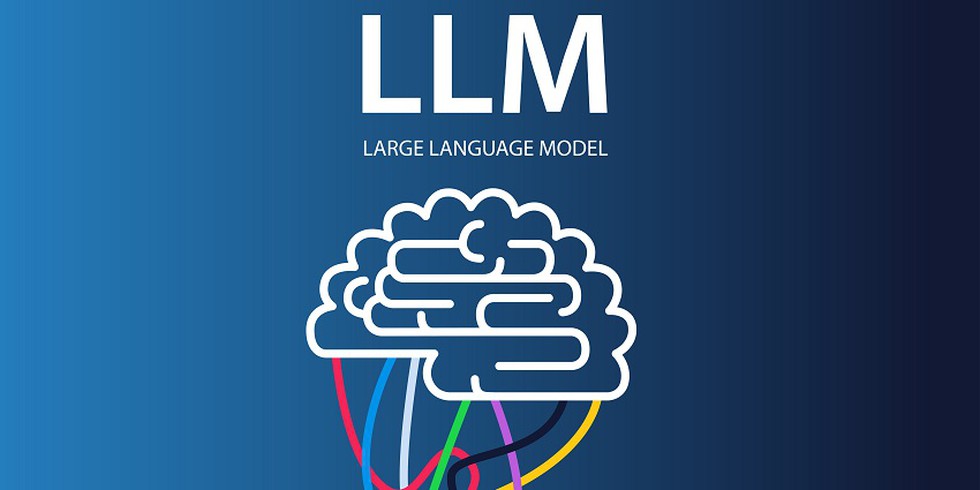
About Large Language Models (LLMs):
- A large language model (LLM) is a type of artificial intelligence (AI) program that can recognize and generate text, among other tasks.
- LLMs are trained on huge sets of data—hence the name "large."
- LLMs are built on machine learning: specifically, a type of neural network called a transformer model.
- In simpler terms, an LLM is a computer program that has been fed enough examples to be able to recognize and interpret human language or other types of complex data.
- Many LLMs are trained on data that has been gathered from the Internet—thousands or millions of gigabytes' worth of text.
- However, the quality of the samples impacts how well LLMs will learn natural language, so an LLM's programmers may use a more curated data set.
- LLMs use a type of machine learning called deep learning in order to understand how characters, words, and sentences function together.
- Deep learning involves the probabilistic analysis of unstructured data, which eventually enables the deep learning model to recognize distinctions between pieces of content without human intervention.
- LLMs are then further trained via tuning: they are fine-tuned or prompt-tuned to the particular task that the programmer wants them to do, such as interpreting questions and generating responses, or translating text from one language to another.
- What are LLMs used for?
- LLMs can be trained to do a number of tasks. One of the most well-known uses is their application as generative AI: when given a prompt or asked a question, they can produce text in reply.
- The publicly available LLM ChatGPT, for instance, can generate essays, poems, and other textual forms in response to user inputs.
Prelims Pointers
Feb. 27, 2024
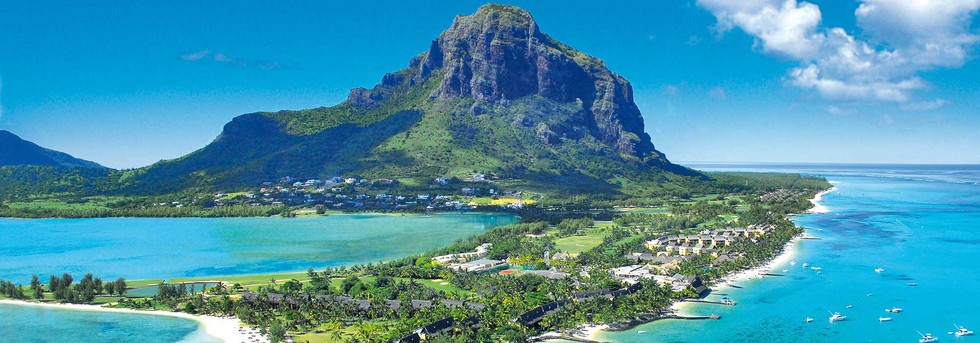
About Mauritius:
- It is an island country in the Indian Ocean, located off the eastern coast of Africa.
- Land:
- It lies about 500 miles (800 km) east of Madagascar in the Indian Ocean.
- Its outlying territories are Rodrigues Island, situated about 340 miles (550 km) eastward, the Cargados Carajos Shoals, 250 miles (400 km) north-eastward, and the Agalega Islands, 580 miles (930 km) northward from the main island.
- Mauritius also claims sovereignty over the Chagos Archipelago(including Diego Garcia), some 1,250 miles (2,000 km) to the northeast, although this claim is disputed by Britain.
- Relief:
- It is volcanic in origin and is almost entirely surrounded by coral reefs.
- The northern part is a plain that rises to a central plateau. The plateau is bordered by small mountains that may have formed the rim of an ancient volcano.
- Climate: The climate is maritime subtropical, with fairly uniform temperatures throughout the year.
- Capital: Port Louis
- Languages: English, French, Mauritian Creole, Bhojpuri, Hindi, Chinese, Marathi.
- Government:
- Mauritius gained independence from the UK in 1968 as a Parliamentary Republic and has remained a stable democracy with regular free elections.
- The chief of state is the president, and the head of government is the prime minister.
- Mauritius is a member of the Common Market for Eastern and Southern Africa (COMESA) and the Southern African Development Community (SADC).
- Population:
- Approximately two-thirds of the population is of Indo-Pakistani origin, most of whom are descendants of indentured labourers brought to work in the sugar industry during the 19th and early 20th centuries.
- About one-fourth of the population is Creole (of mixed French and African descent), and there are small numbers of people of Chinese and Franco-Mauritian descent.
- Religion: About half of the population is Hindu, about one-third is Christian.
Prelims Pointers
Feb. 27, 2024
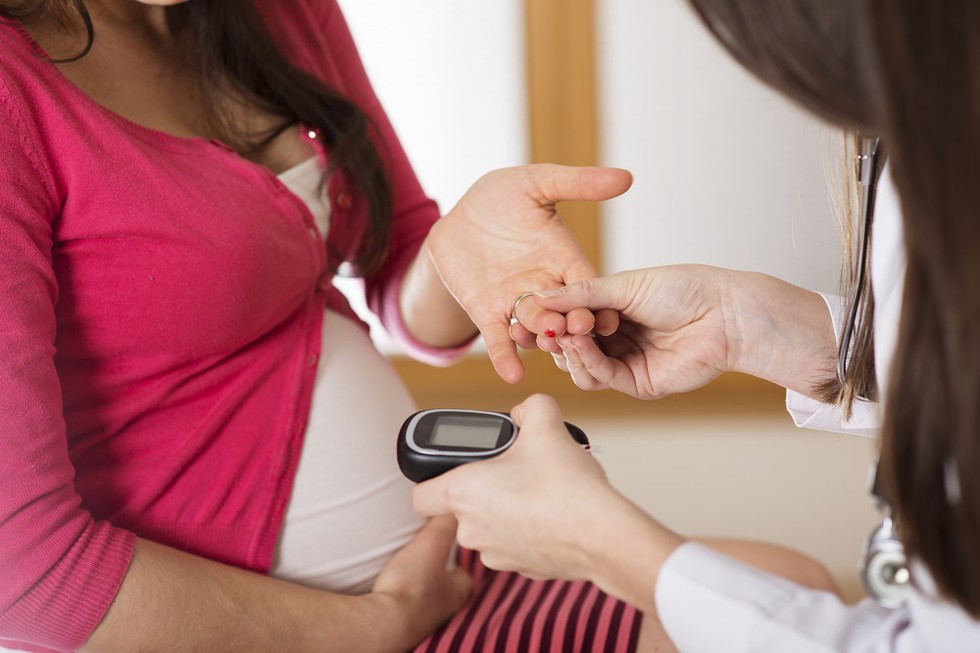
About Garbhini-GA2:
- It is the first India-specific artificial intelligence (AI) model to precisely determine the age of a foetus in a pregnant woman in the second and third trimesters.
- It has been designed by researchers at the Indian Institute of Technology Madras and the Translational Health Science and Technology Institute (THSTI), Faridabad.
- It is part of an interdisciplinary group for advanced research on birth outcomes – the Department of Biotechnology (DBT) India initiative (GARBH-Ini) programme.
- It is the first late-trimester GA estimation model to be developed and validated using Indian population data.
- The Garbhini-GA2 accurately estimates the foetus’ age, reducing error by almost three times.
- Accurate ‘Gestational Age’ (GA) is necessary for the appropriate care of pregnant women and for determining precise delivery dates.
- Once validated in pan-India cohorts, Garbhini-GA2 holds the potential to be widely deployed in clinics across the country, contributing to improved maternal and infant healthcare outcomes and reducing mortality rates.
Key Facts about Translational Health Science and Technology Institute (THSTI):
- It is an autonomous institute of Biotechnology under the Ministry of Science and Technology, with the prime ideology of contributing most of its work beyond discovery and research.
- It was established in 2009 in Faridabad, Haryana.
- It integrates multidisciplinary teams from the fields of medicine, science, and technology to harness translational knowledge for clinical research.
- It also facilitates social Innovation and entrepreneurship in the field of maternal and child healthcare.
Prelims Pointers
Feb. 27, 2024
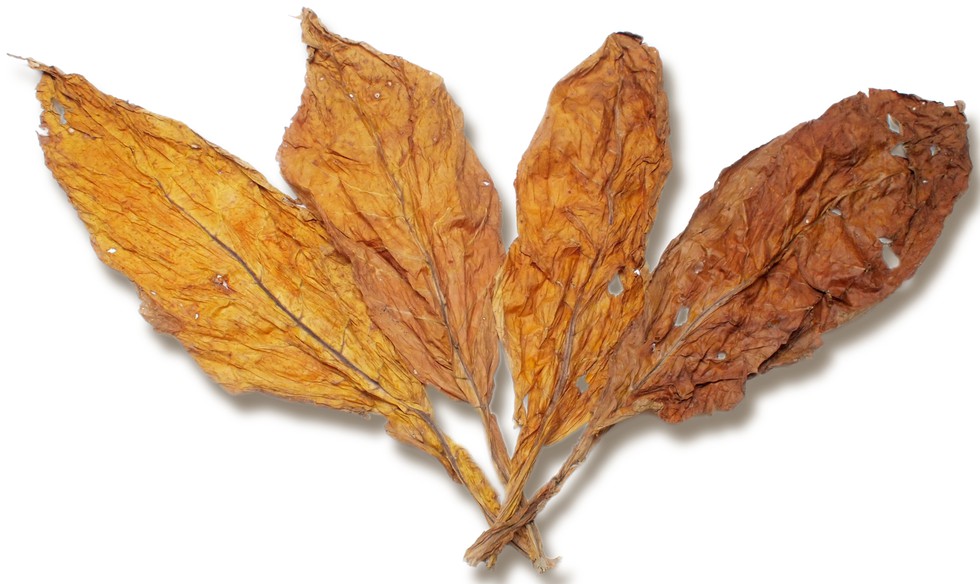
About the Flue-Cured Tobacco:
- Curing is a process by which the harvested tobacco leaf is made ready for the market.
- It is a well-standardised process especially in FCV tobacco to achieve the desirable qualities in the cured leaf along with the removal of moisture.
- There are three types of tobacco curing methods traditionally used: Air-Cured, Fire-Cured, and Flue-Cured.
- Each of the different curing methods results in a tobacco product that is distinguishable by both its nicotine content and its aroma.
- Why is Tobacco cured?
- To create smoking tobacco, the tobacco leaves need to be cured, or dried out.
- The wet, green tobacco leaves of a tobacco plant initially contain too much moisture to catch fire.
- They also have higher chlorophyll content. By releasing a certain amount of chlorophyll from the leaves during the drying-out process, the natural tannins come out giving the smoked tobacco its flavour and scent.
- Key characteristics of Flue-Cured Tobacco:
- Produces primarily cigarette tobacco
- Contains a high sugar content
- Contains medium to high levels of nicotine
- Rich in natural tannins which create its distinct mild and slightly sweet flavour and aroma
- In India Flue Cured Virginia (FCV) Tobacco is mainly produced in India in 2 states, Andhra Pradesh and Karnataka.
Prelims Pointers
Feb. 27, 2024
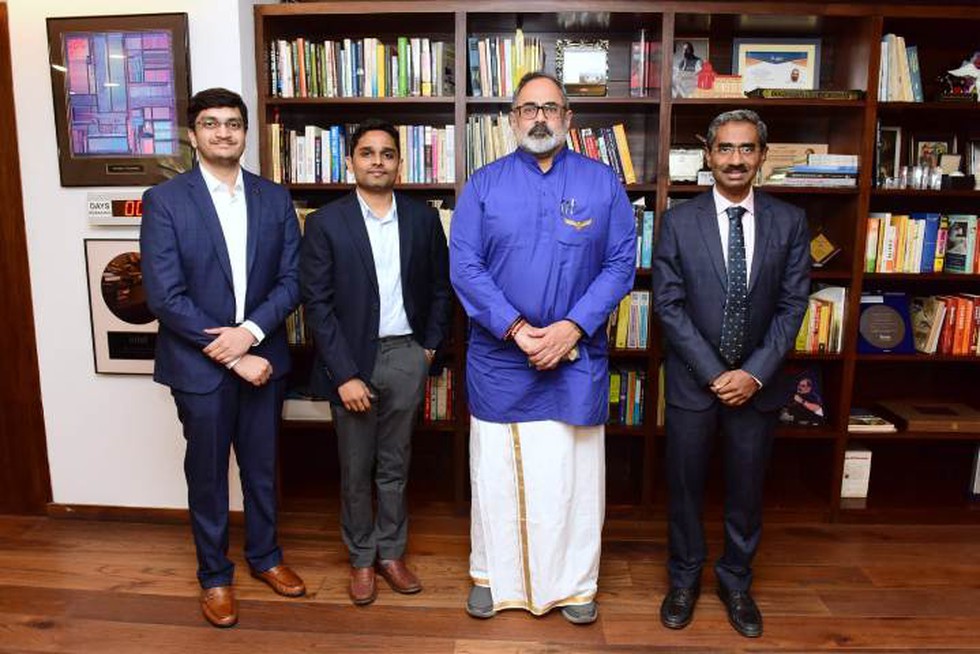
About the Investor Information and Analytics Platform:
- It acts as a one-stop shop for startups to seamlessly access Venture Capitalists (VCs) and investor networks, Govt schemes and several other components of the startup landscape for all stakeholders.
- By integrating information at different levels, the platform is also a one-stop shop for entrepreneurs to search for information on government agencies, incubators, investors, VCs and banks that invest in startups.
- This platform has been developed by the Researchers at the Centre for Research on Start-ups and Risk Financing (CREST) of IIT Madras.
- It will significantly help startup founders, entrepreneurs and Young Indians who intend to build their own devices, services and platforms for India and for the world.
- An important feature of this unique platform is “StartupGPT” which is an AI-based conversational platform whose function is to help ease information access for those who are navigating exhaustive data.
- A user will be able to ask queries in simple language to access the information they seek in real time.
- For the sustainability of the platform, full access will be provided at a very nominal cost so that maximum entrepreneurs can benefit from this resource.
Prelims Pointers
Feb. 27, 2024
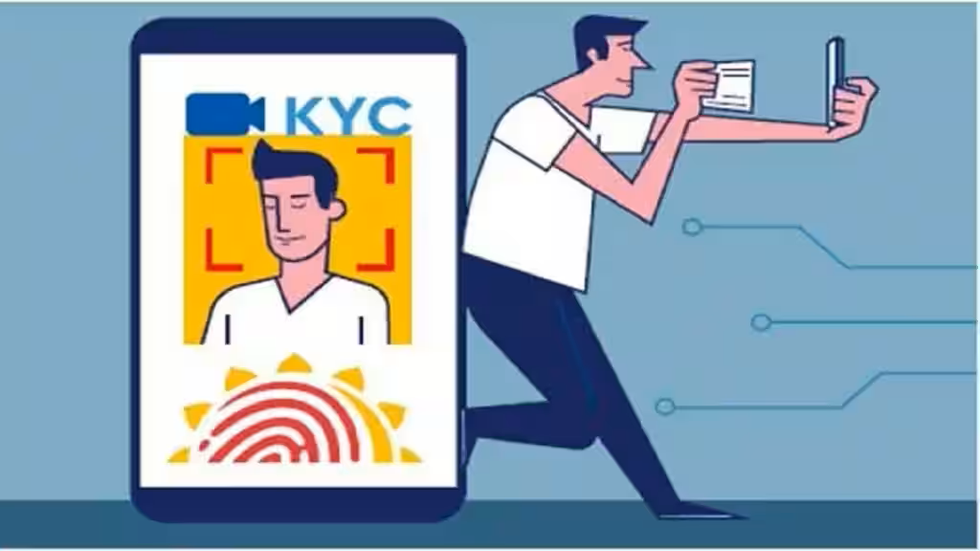
About the Know Your Customer:
- It is a comprehensive process that financial and non-financial institutions follow to verify the authenticity and identity of their customers.
- The KYC process is mandatory for every customer before investing in any instruments or starting a bank account.
- In India at present, separate KYCs are needed for different financial products such as opening a bank account, investing in mutual funds, buying a life cover or investing in retirement-savings funds.
- Multiple KYCs, regular updates and even the exact specifications often prove to be a deterrent for new investors.
- To eliminate the need to do repeated KYC for investing across financial assets, the central government launched the Central KYC Records Registry.
- What is the Central KYC Records Registry?
- It was launched by the central government of India in 2016.
- It has been limited only to the capital markets.
- In fact, while dealing in securities markets, once KYC is done through a Securities and Exchange Board of India (SEBI) registered intermediary such as a broker, depository participant or mutual fund, customers do not have to undergo the same process again for fresh investments.
- The government authorised the Central Registry of Securitisation Asset Reconstruction and Security Interest of India (CERSAI) to perform the functions of the CKYCR.
- This centralised registry receives, stores, safeguards and retrieves the KYC records of a customer in a digitally secure electronic format.
- Customers have to submit their KYC details only once with any of the reporting entities of the Reserve Bank of India, Sebi, Insurance Regulatory and Development Authority of India, Pension Fund Regulatory and Development Authority at the time of opening an account.
- Once the information is registered, customers will receive a 14-digit KYC Identification Number that can be used at any financial institution registered with CERSAI.
- Financial institutions can access the CKYCR database to retrieve the KYC records of customers while onboarding them.
- In case of any changes in the details of a customer, the reporting entity will initiate a centralised KYC (CKYC) update after taking the latest KYC record of the customer.
Prelims Pointers
Feb. 27, 2024
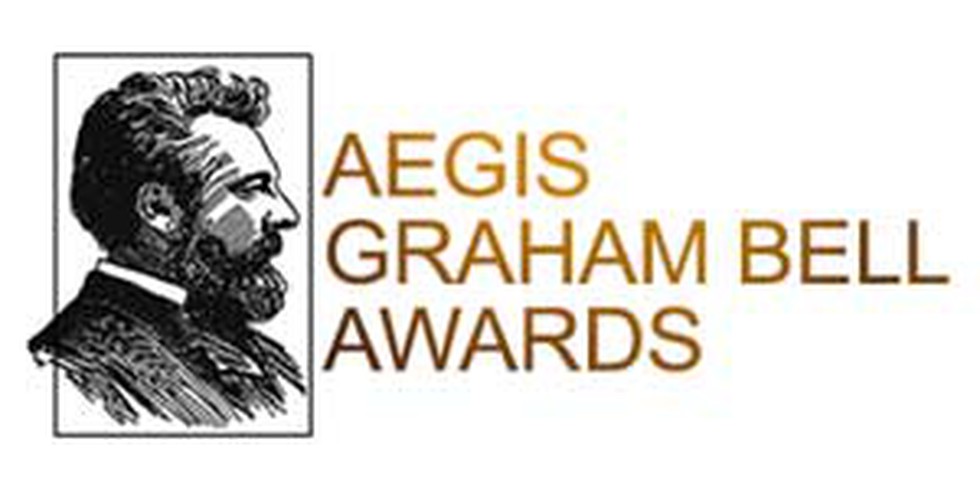
About Aegis Graham Bell Awards:
- It was initiated in 2010 by the Aegis School of Data Science.
- It is a tribute to the father of telephony and great innovator, Alexander Graham Bell.
- The Aegis School of Business, Data Science and Cyber Security has initiated this award to promote innovations and recognise the outstanding contributions by innovators in various fields including education, Information and Communications Technology (ICT), Artificial Intelligence (AI) and data science.
- This award in India is supported by the Ministry of Electronics and Information Technology (MeitY), Skill India and the National Informatics Centre.
- Following are the projects of C-DOT which received this award:
- ASTR Project: ASTR (AI & Facial Recognition-powered Solution for Telecom SIM Subscriber Verification) is a game-changer in the fight against cybercrimes.
- Designed to analyse, identify, and eliminate fake/forged mobile connections, it's a crucial step towards ensuring a secure telecom environment.
- CEIR (Central Equipment Identity Register) solution: CEIR helps revolutionise mobile security by detecting clone IMEIs, restricting the import of counterfeit mobile devices and also enabling the blocking and tracing of lost or stolen phones.
- Quantum Key Distribution (QKD) product: India employs quantum mechanics to create an unbreakable cryptographic protocol even with Quantum computers.
Prelims Pointers
Feb. 27, 2024

About the Third-Party Application Provider (TPAP):
- It is an entity that provides UPI-compliant app(s) to the end-user customers to facilitate UPI-based payment transactions.
- These applications could be mobile wallets, merchant apps, or any other platform that utilises UPI for payments.
- NPCI, the umbrella organisation for operating retail payments and settlement systems in India, owns and operates the UPI platform.
- Working of TPAPs
- TPAPs leverage the UPI infrastructure provided by NPCI and work with payment service providers (PSPs) and banks to facilitate transactions.
- They are responsible for ensuring that their applications adhere to security standards and compliance guidelines set by NPCI.
- As per the current regulations, payment service providers (PSPs) need to obtain a TPAP licence from NPCI to run UPI services and facilitate merchant transactions through partner banks.
- Currently, there are 22 NPCI-approved 3rd party Unified Payments Interface (UPI) apps that can be used to send and receive money from other UPI users by using UPI IDs.
- They include Amazon Pay, Google Pay, Groww, Jupiter Money, Mobikwik, Phonepe, Samsung Pay, TataNeu and Whatsapp.
Feb. 26, 2024
Prelims Pointers
Feb. 26, 2024
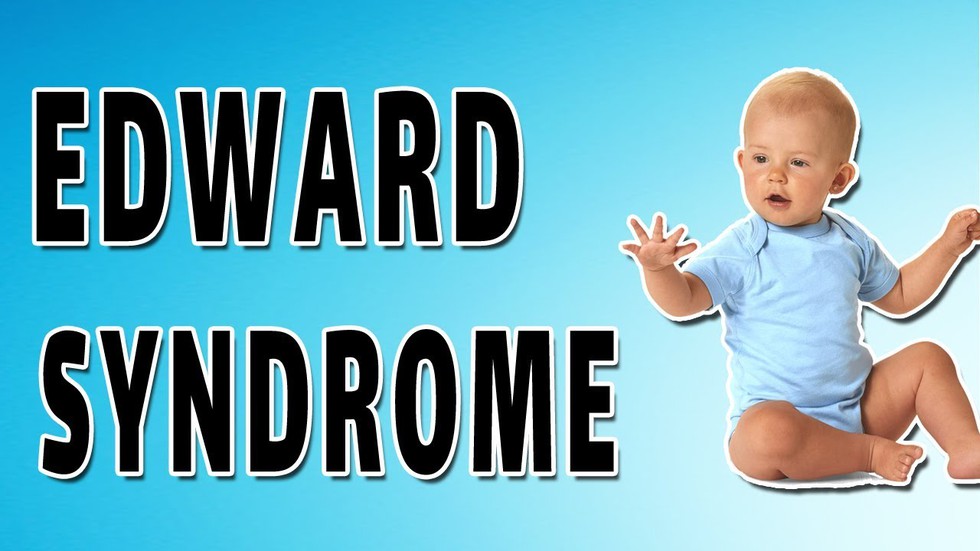
About Edwards syndrome:
- It is also known as trisomy 18.
- It is an autosomal chromosomal disorder due to an extra copy of chromosome 18.
- It is a very severe genetic condition that affects a child’s body development and growth.
- Symptoms: Children diagnosed with trisomy 18 have a low birth weight, multiple birth defects and defining physical characteristics.
- There are three types of Edwards syndrome
- Complete trisomy 18:
- It is the most common form (94%).
- In this type, every cell contains three complete copies of chromosome 18.
- The extra chromosome is most often of maternal origin.
- Mosaic trisomy 18:
- It is the second most common type (less than 5%).
- In this type, both a complete trisomy 18 and a normal cell line exist.
- Partial trisomy 18:
- In this type, only a partial segment of chromosome 18 is present in triplicate.
- The partial triplicate often results from a balanced translocation or inversion carried by one of the parents.
- Treatment: There are no specific treatments for trisomy 18. Treatment will focus on the symptoms of the condition, such as heart conditions, breathing difficulties and infections.
Prelims Pointers
Feb. 26, 2024
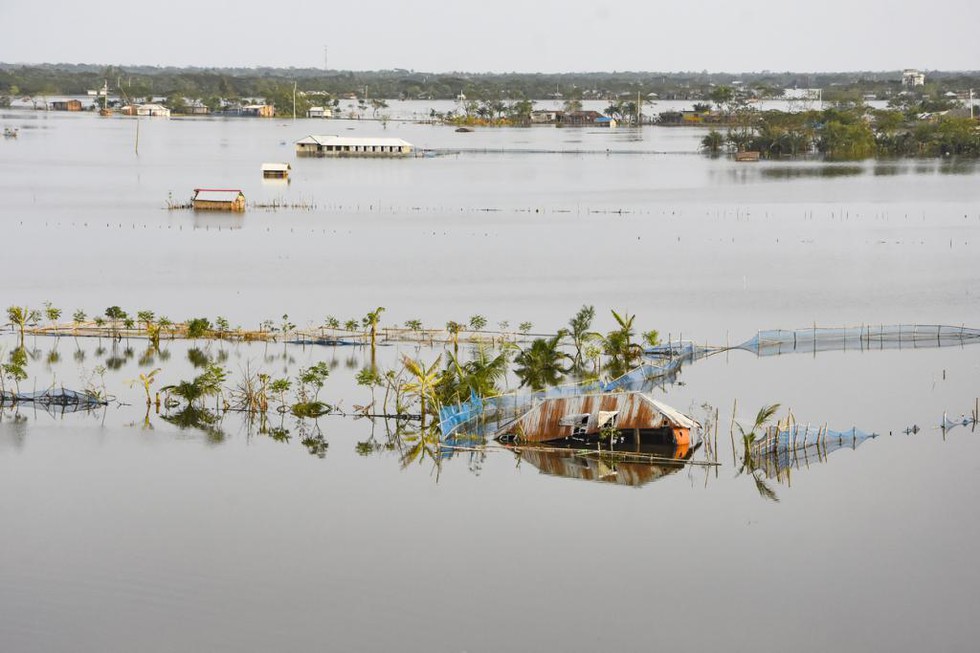
About Loss and Damage Board:
- Background:
- At the 27th Conference of Parties to the United Nations Framework Convention on Climate Change (COP27) held in Egypt, Parties reached an agreement on providing loss and damage funding to nations most vulnerable and impacted by the effects of climate change.
- At COP28, the fund was formally established and a decision text stated that the fund would be governed and supervised by a board, a decision-making body.
- The board is tasked with setting up a strategic direction for the Fund as well as its governance and operational modalities, policies, frameworks and work programme, including relevant funding decisions.
- The Board will comprise 26 members, 12 members from developed countries and 14 from developing nations.
What is the Loss and Damage Fund?
- It is a global financial package to ensure the rescue and rehabilitation of countries facing the cascading effects of climate change.
- The term refers to the compensation that rich nations, whose industrial growth has resulted in global warming and driven the planet into a climate crisis, must pay to poor nations, whose carbon footprint is low but are facing the brunt of rising sea levels, floods, crippling droughts, and intense cyclones, among others.
- It is often categorised as economic or non-economic.
- Economic loss and damage are negative impacts that we can assign a monetary value to.
- These are things such as the costs of rebuilding infrastructure that has been damaged due to a flood, or the loss of revenue from agricultural crops that were destroyed due to drought.
- Non-economic loss and damage are negative impacts where it is difficult or infeasible to assign a monetary value.
- These are things such as trauma from experiencing a tropical cyclone, loss of community due to displacement of people, or loss of biodiversity,”
Prelims Pointers
Feb. 26, 2024
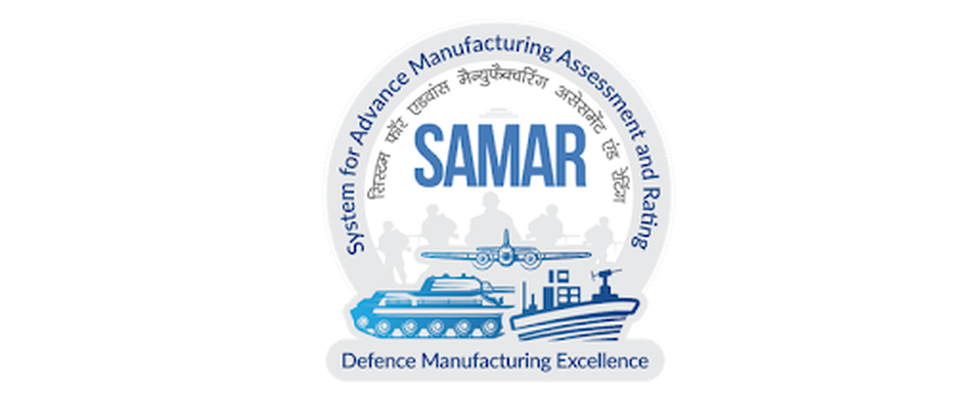
About SAMAR Assessment Certificates:
- System for Advance Manufacturing Assessment and Rating (SAMAR) certificateis a benchmark to measure the competency of defence manufacturing enterprises.
- It is an outcome of the collaboration between DRDO and the Quality Council of India (QCI) to strengthen the defence manufacturing ecosystem in the country to further the vision of making India self-reliant in defence manufacturing.
- Objective:
- Provide an objective assessment of the manufacturing capability of Defence Manufacturing Enterprises
- Enable enterprises to benchmark their performance across a range of business capabilities to enhance quality, reliability and competitiveness
- Create a credible database of Defence manufacturers for ease in vendor selection and development
- Strengthen the Defence manufacturing ecosystem in the country with an objective to realise the vision of making India self-reliant in Defence manufacturing
- Eligibility: All defence manufacturing enterprises, both MSME and Large enterprises, are eligible to apply for this certification.
- Validity: It is valid for a period of 2 years from the date of issuance of the certificate.
- The certification is based on a maturity assessment model developed by QCI and is applicable to all defence manufacturing enterprises i.e., micro, small, medium and large enterprises.
Prelims Pointers
Feb. 26, 2024
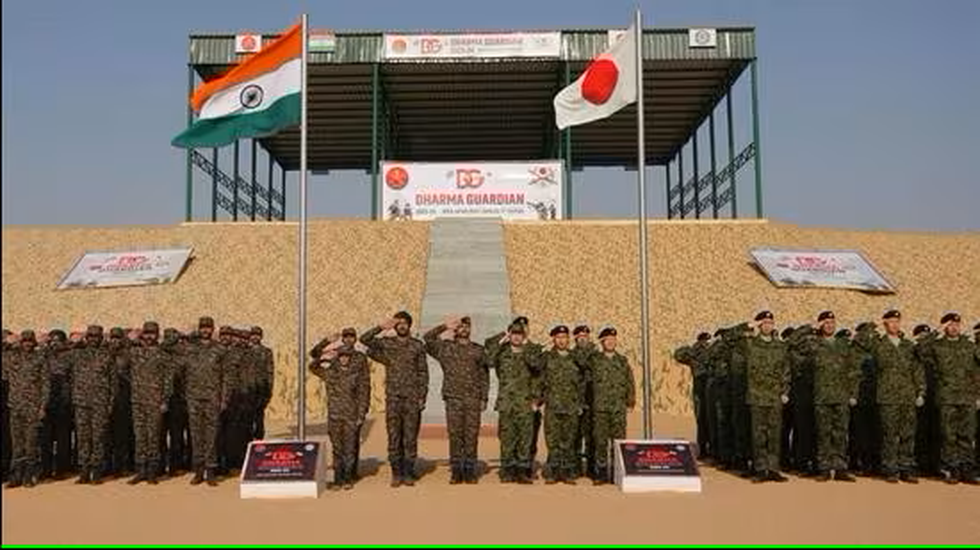
About Exercise Dharma Guardian:
- It is an annual exercise and is conducted alternatively in India and Japan.
- It is the 5th edition of joint military exercise between India and Japan.
- The aim of the Exercise is to foster Military Cooperation and enhance combined capabilities to execute joint operations in the semi-urban environment under Chapter VII of the United Nations Charter.
- The Exercise would focus on a high degree of physical fitness, joint planning, joint tactical drills and basics of special arms skills.
- Significance
- It will enable the two sides to share their best practices in Tactics, Techniques and Procedures for conducting tactical operations.
- The Exercise will also facilitate developing interoperability, bonhomie and camaraderie between troops of both sides.
- This will enhance the level of defence cooperation, further fostering bilateral relations between the two friendly nations.
Other Exercises between India and Japan:
- Malabar: It is a multinational naval exercise in which India, Japan, the United States and Australia participate.
- JIMEX(naval)
- SHINYUU Maitri (Air Force)
Prelims Pointers
Feb. 26, 2024
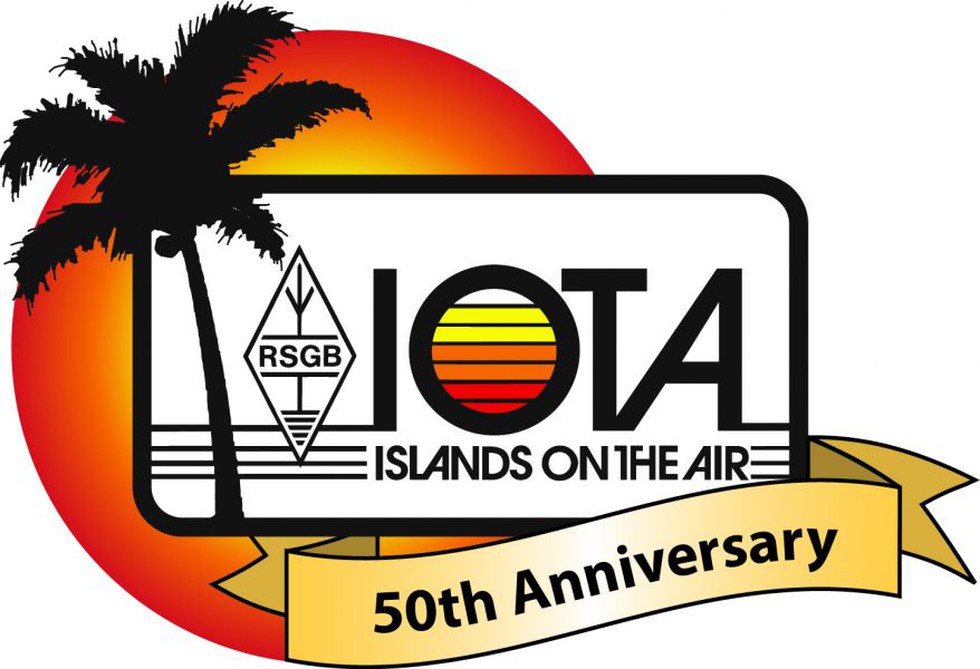
About Island On The Air (IOTA) Programme:
- It is a pioneering programme that connects radio amateurs worldwide with stations on islands.
- It was established in 1964.
- It is managed by IOTA Ltd in collaboration with the Radio Society of Great Britain (RSGB), categorising islands into groups for communication.
Key Facts about Amateur Radio (HAM Radio)
- Amateur radio is a popular hobby involving the use of radio frequency spectrum for non-commercial purposes.
- HAM radio operators communicate using designated radio frequencies, engaging in diverse activities like contests, emergency communication support, experimentation, technical learning, and community engagement.
- The hobby offers a unique blend of technical learning, community engagement, and global connectivity through radio waves, emphasising innovation and service.
- In India, as per the Indian Wireless Telegraphs (Amateur Service) Amendment Rules, 1984
- ‘Amateur service’ means a service of self-training intercommunications and technical investigation carried on by Amateurs that is, by persons duly authorised under these rules interested in radio technique solely with a personal aim and without pecuniary interest.”
- Any citizen of India who is above 12 years of age can become a ham by qualifying in the Amateurs Station Operators’ examination (ASO) and obtaining a valid Amateur wireless telegraph station licence.
Prelims Pointers
Feb. 26, 2024
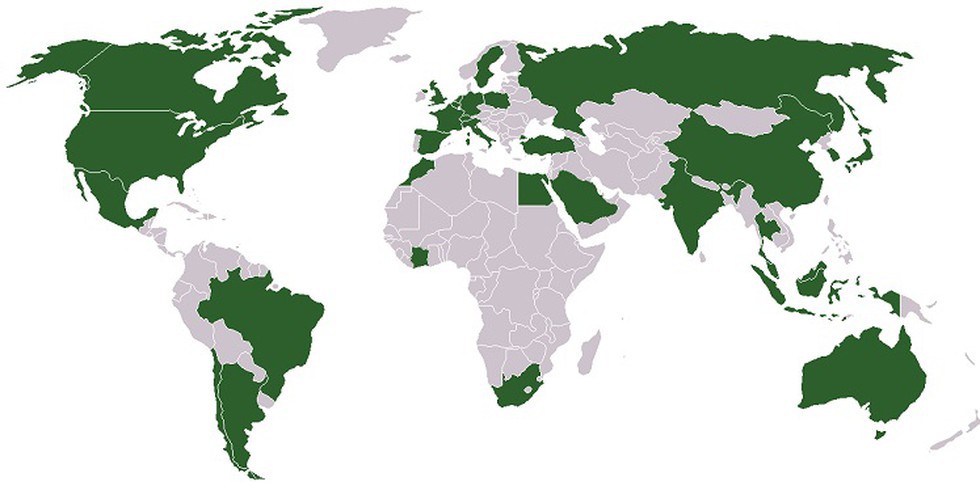
About G-33:
- The G33 (or the Friends of Special Products in Agriculture) is a coalition of developing and least-developed countries.
- Despite the name, there are currently 47 member nations. Some of the main countries include India, China, Indonesia, Pakistan, Nigeria, Philippines, Turkey, Tanzania, Kenya, and South Korea.
- It was established prior to the 2003 Cancun ministerial conference that was coordinated during the Doha Round of World Trade Organization (WTO) negotiations, specifically in regard to agriculture.
- Dominated by India, the group has "defensive" concerns regarding agriculture in relation to WTO negotiations, and seeks to limit the degree of market opening required of developing countries.
- The group has advocated the creation of a "special products" exemption, which would allow developing countries to exempt certain products from tariff exemptions, and also a "special safeguard mechanism" which would permit tariff increases in response to import surges.
Prelims Pointers
Feb. 26, 2024
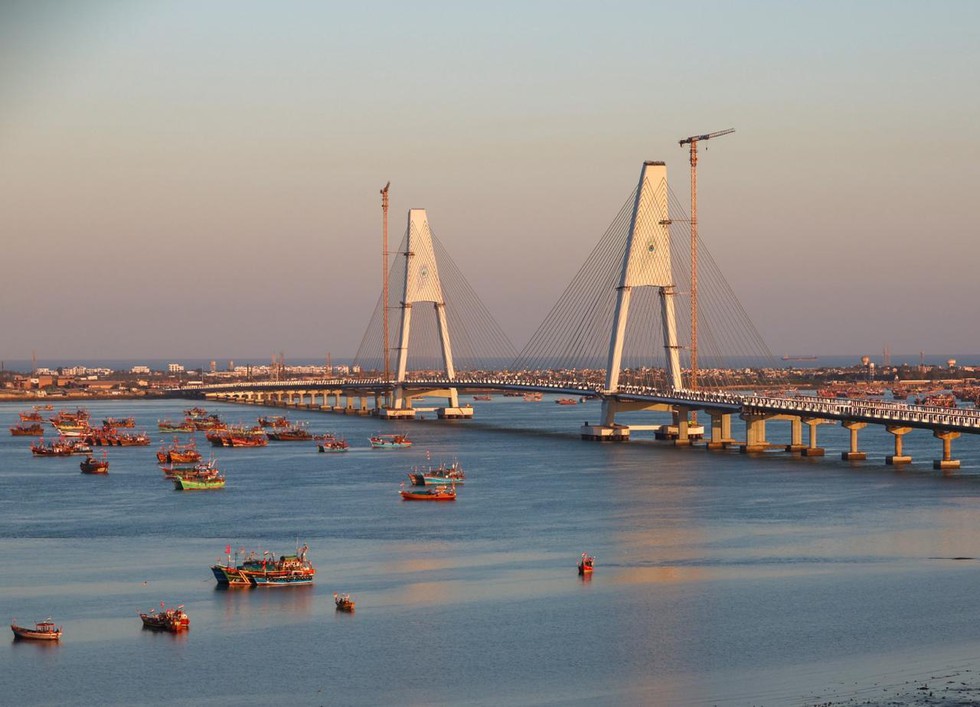
About 'Sudarshan Setu' Bridge:
- It is India’s longest cable-stayed bridge, at 2.32 km, on the Arabian Sea, connecting Beyt Dwarka island to mainland Okha in Gujarat's Devbhumi Dwarka district.
- It boasts a unique design, featuring a footpath adorned with verses from the Bhagavad Gita and images of Lord Krishna on both sides.
- It also has solar panels installed on the upper portions of the footpath, generating one megawatt of electricity.
- The 2.32 km bridge, including 900 metres of a central double-span cable-stayed portion and a 2.45 km long approach road, has been constructed at a cost of Rs 979 crore.
Key Facts about Beyt Dwarka:
- Beyt Island (also called Bet Dwarka or Shankodhar) is a small island off the coast of Dwarka, Gujarat.
- Located at the mouth of the Gulf of Kutch, the island is enclosed by a few temples, white sand beaches, and coral reefs.
- History:
- It is believed to be the home of Lord Krishna when he was the king of Dwarka.
- It derives its name from the word ‘bet’, which translates to ‘gift’, and it is believed that Lord Krishna received it from his friend Sudama.
- Explorations and excavations carried out under the sea have revealed the presence of settlements whose age can be traced back to the era of the Harappan civilisation and that of the Mauryan rule.
- In the later years, the region was under the administration of the Gaekwad clan of the state of Baroda.
- Shri Keshavraj Ji Temple:
- It is a Lord Krishna temple located on the island. It is an important site for Hindu pilgrimage.
- The temple is 500 years old and was built by Vallabhacharya.
Prelims Pointers
Feb. 26, 2024
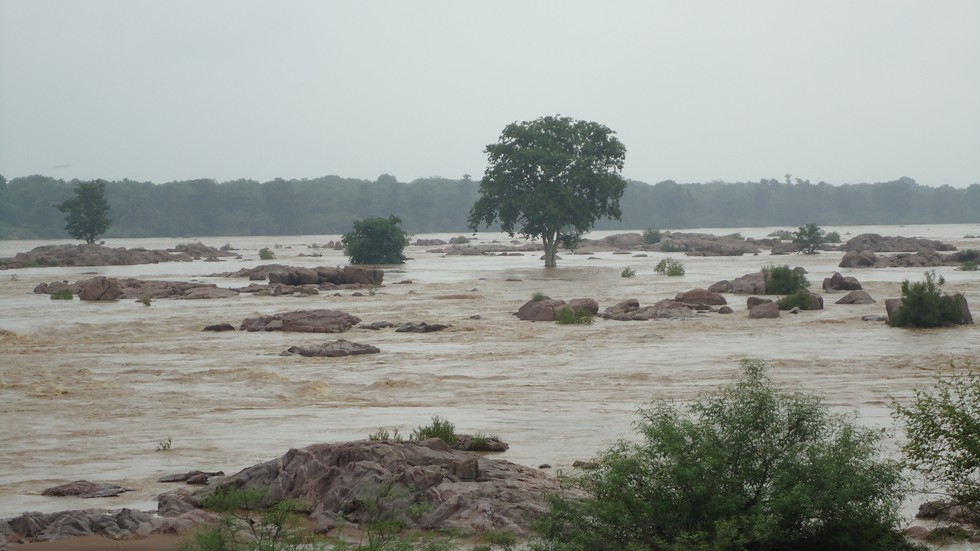
About Ken River:
- It is one of the major rivers of the Bundelkhand region of central India.
- It flows through two states, namely Madhya Pradesh and Uttar Pradesh.
- It is a tributary of the Yamuna River. The river is the last tributary of the Yamuna before the Yamuna joins the Ganga.
- Course:
- The river originates near the village of Ahirgawan on the northwest slopes of the Kaimur Range in the district of Jabalpur, Madhya Pradesh.
- Crossing the Bijawar-Panna hills, the river cuts a 60 km long, and 150- 180 m deep gorge. It is joined by several streams in this gorge, making waterfalls.
- It travels a distance of 427 km and then merges with the Yamuna at Chilla village, near Fatehpur in Uttar Pradesh.
- It is known for its rare Sajhar or Dendritic Agate stone.
- Tributaries: The major tributaries of the Ken River are Bawas, Dewar, Kaith, Baink, Kopra, and Bearma.
Prelims Pointers
Feb. 26, 2024
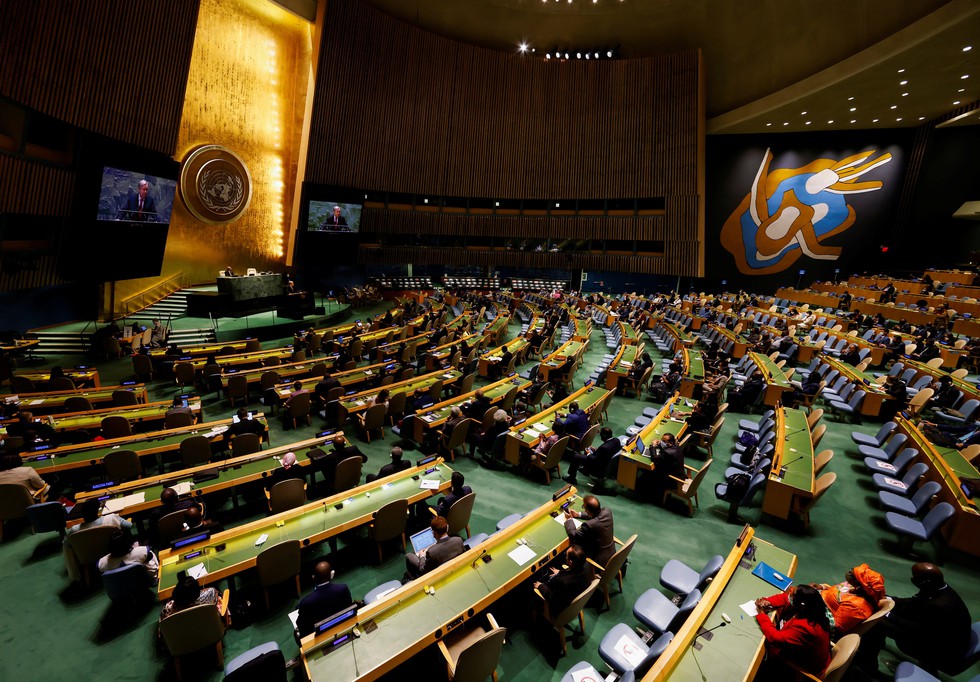
About the United Nations Conference on Trade and Development (UNCTAD):
- It is the UN’s leading institution dealing with trade and development.
- It is a permanent intergovernmental body established by the United Nations General Assembly in 1964.
- Its objective is to assist developing countries, especially the least developed countries, and countries with economies in transition, to integrate beneficially into the global economy.
- It also seeks to help the international community promote a global partnership for development, increase coherence in global economic policy-making, and assure development gains for all from trade.
- It provides economic and trade analysis, facilitates consensus-building, and offers technical assistance to help developing countries use trade, investment, finance, and technology for inclusive and sustainable development.
- Headquarters: Geneva, Switzerland.
- UNCTAD membership consists of 195 states.
- Its activities are advisory by nature.
- Reports published by UNCTAD:
- Trade and Development Report
- World Investment Report
- The Least Developed Countries Report
Prelims Pointers
Feb. 26, 2024
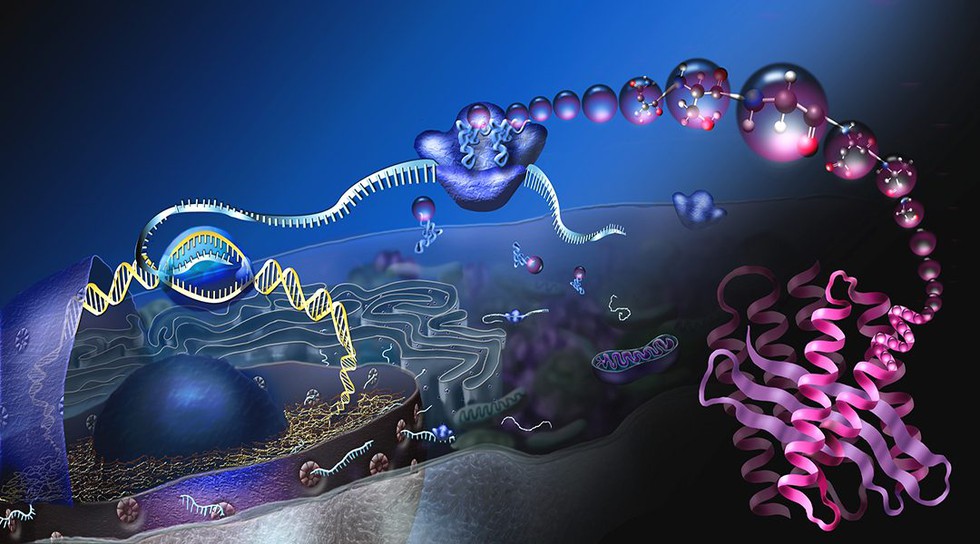
About Ribosomes:
- Ribosomes are non-membrane-bound cell organelles made of RNA and proteins.
- They are found in both prokaryotic and eukaryotic cells.
- In eukaryotic organisms, ribosomes are found in the cytoplasm, mitochondria, and chloroplast.
- All prokaryotic ribosomes are found free in the cytoplasm of the cell.
- Ribosomal structure and function are strikingly similar in all organisms and organelles.
- They are made of two subunits, the large and the small subunit which comprises ribosomal RNA (rRNA) and proteins.
- Primary Function:
- They are complex molecular machines that make proteins from amino acids in a process called protein synthesis, or translation.
- Every cell needs ribosomes to manufacture proteins.
- The ribosome reads the messenger RNA (mRNA) sequence and translates that genetic code into a specified string of amino acids, which grow into long chains that fold to form proteins.
- The newly formed proteins detach themselves from the ribosome site and migrate to other parts of the cell for use.
What is mRNA?
- mRNA is a type of single-stranded RNA involved in protein synthesis.
- mRNA is made from a DNA template during the process of transcription.
- The role of mRNA is to carry protein information from the DNA in a cell’s nucleus to the cell’s cytoplasm(watery interior), where the protein-making machinery reads the mRNA sequence and translates each three-base codon into its corresponding amino acid in a growing protein chain.
- So, mRNA really is a form of nucleic acid which helps the human genome, which is coded in DNA, to be read by the cellular machinery.

